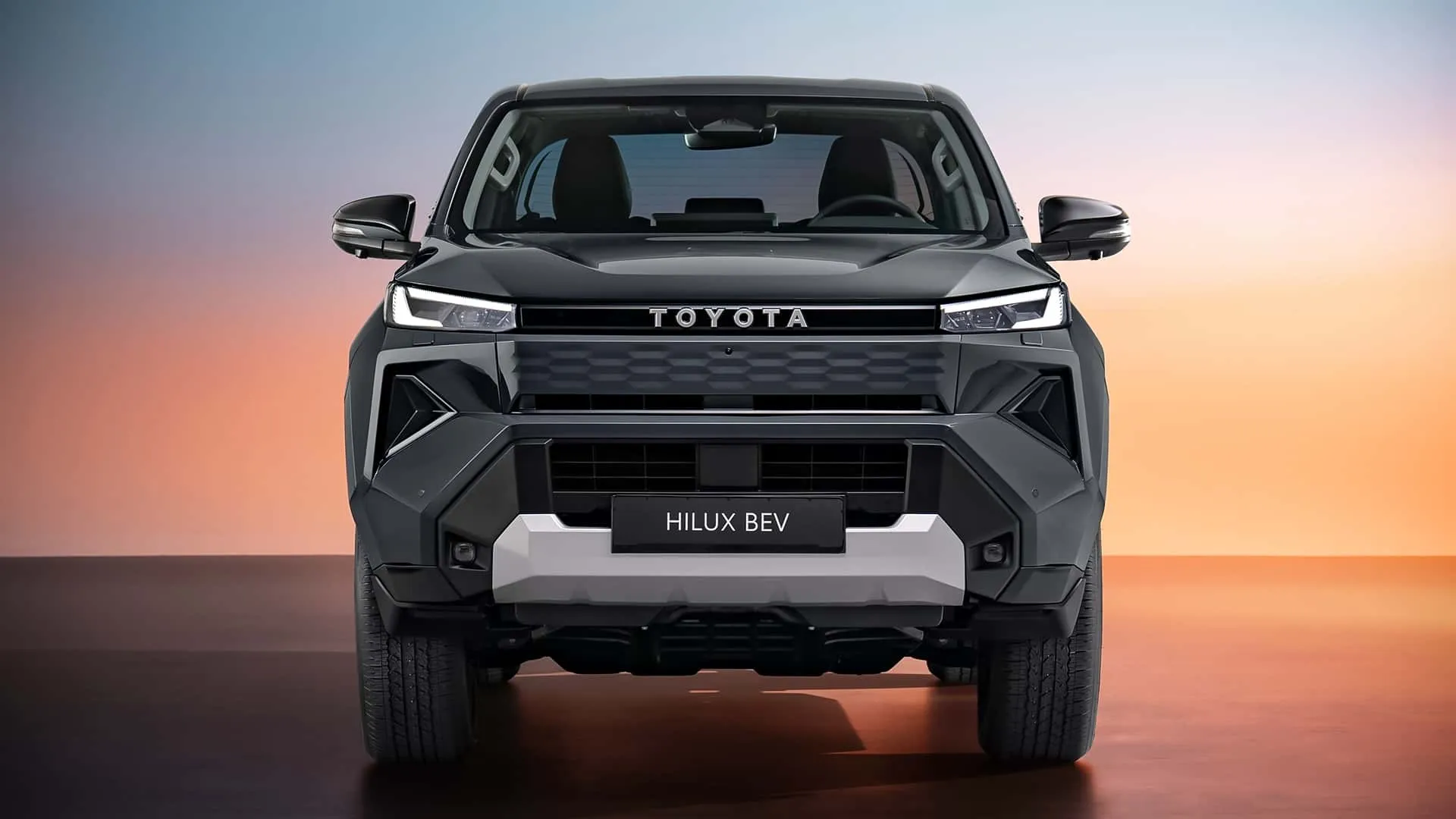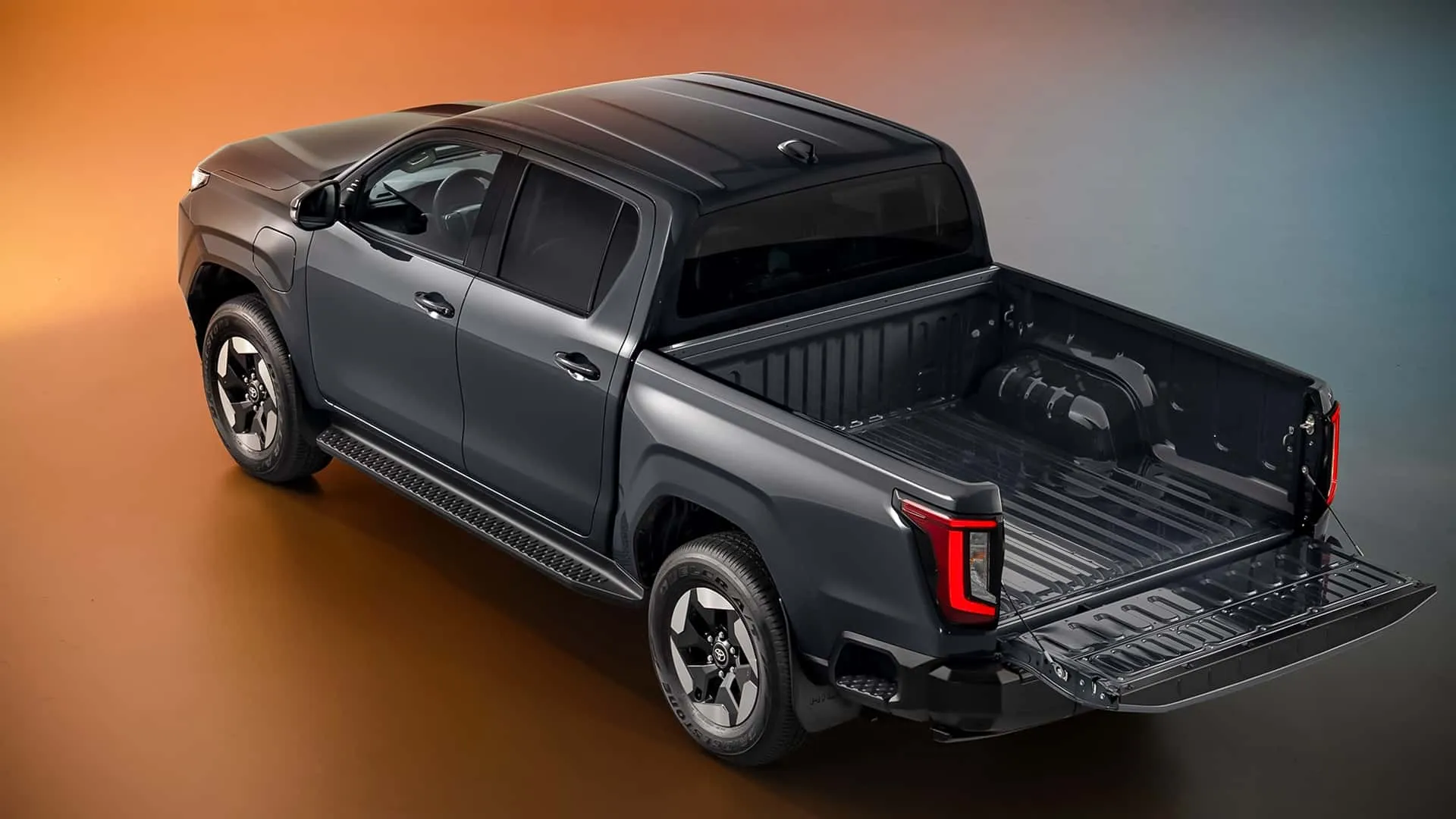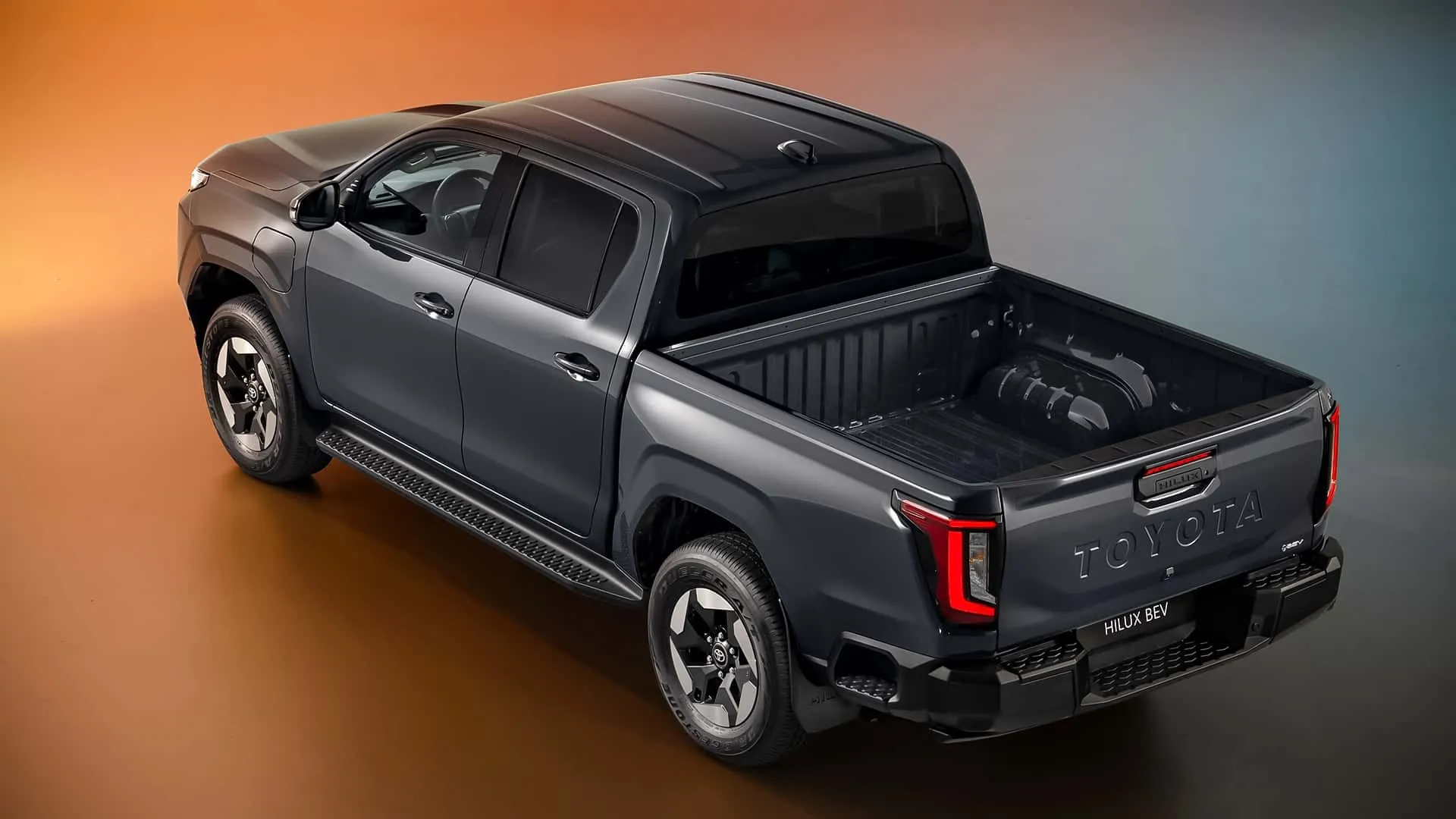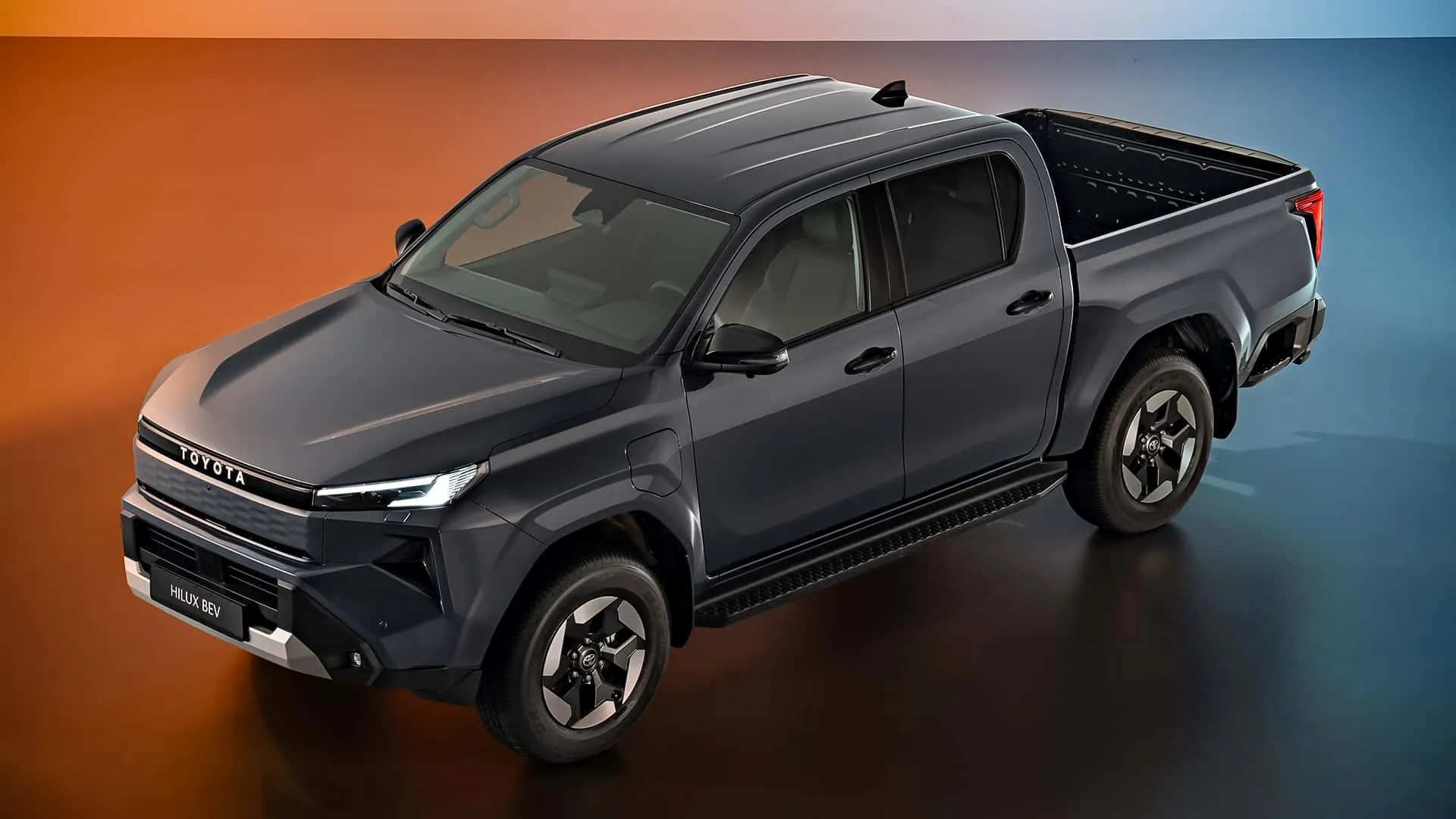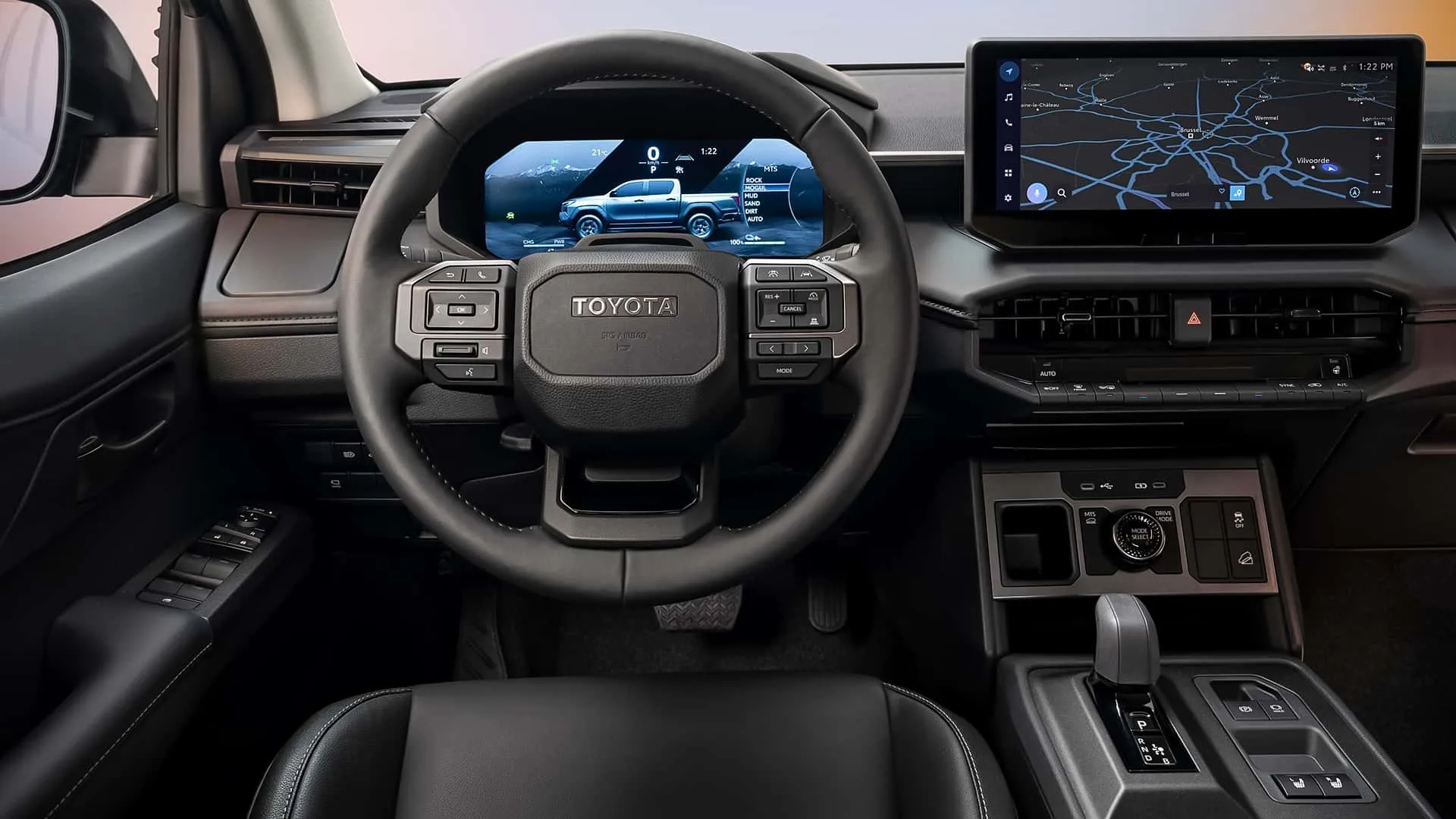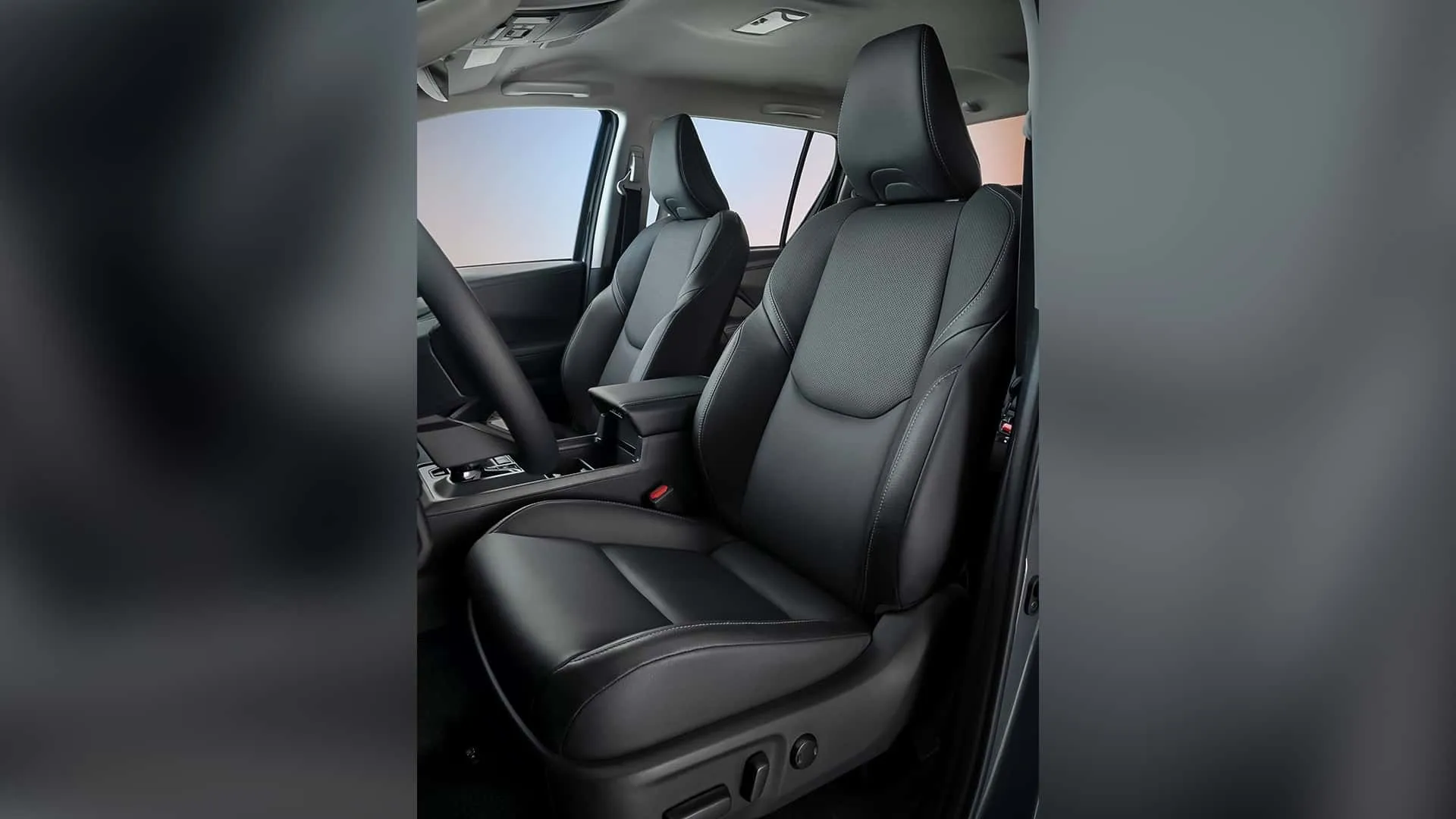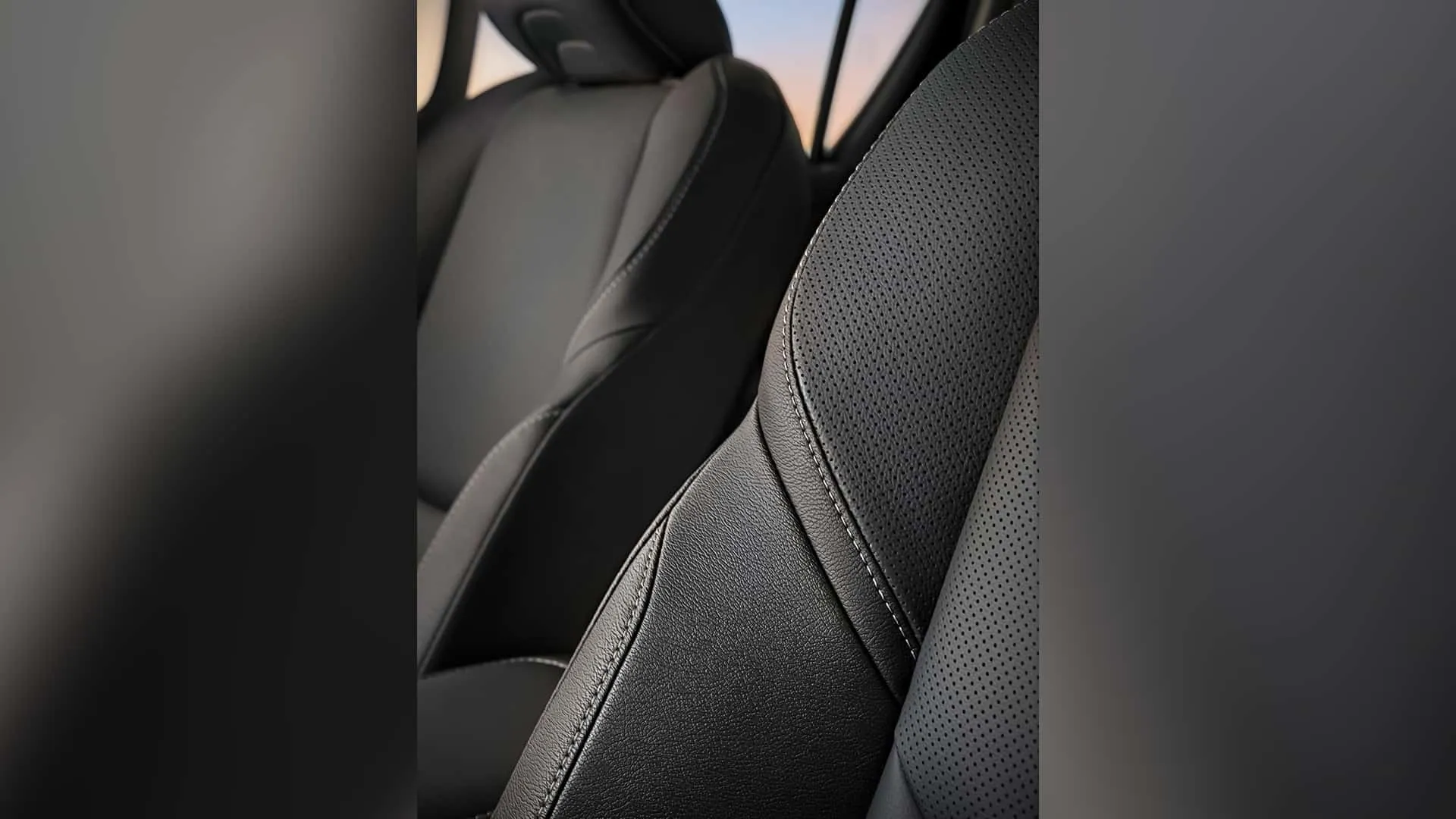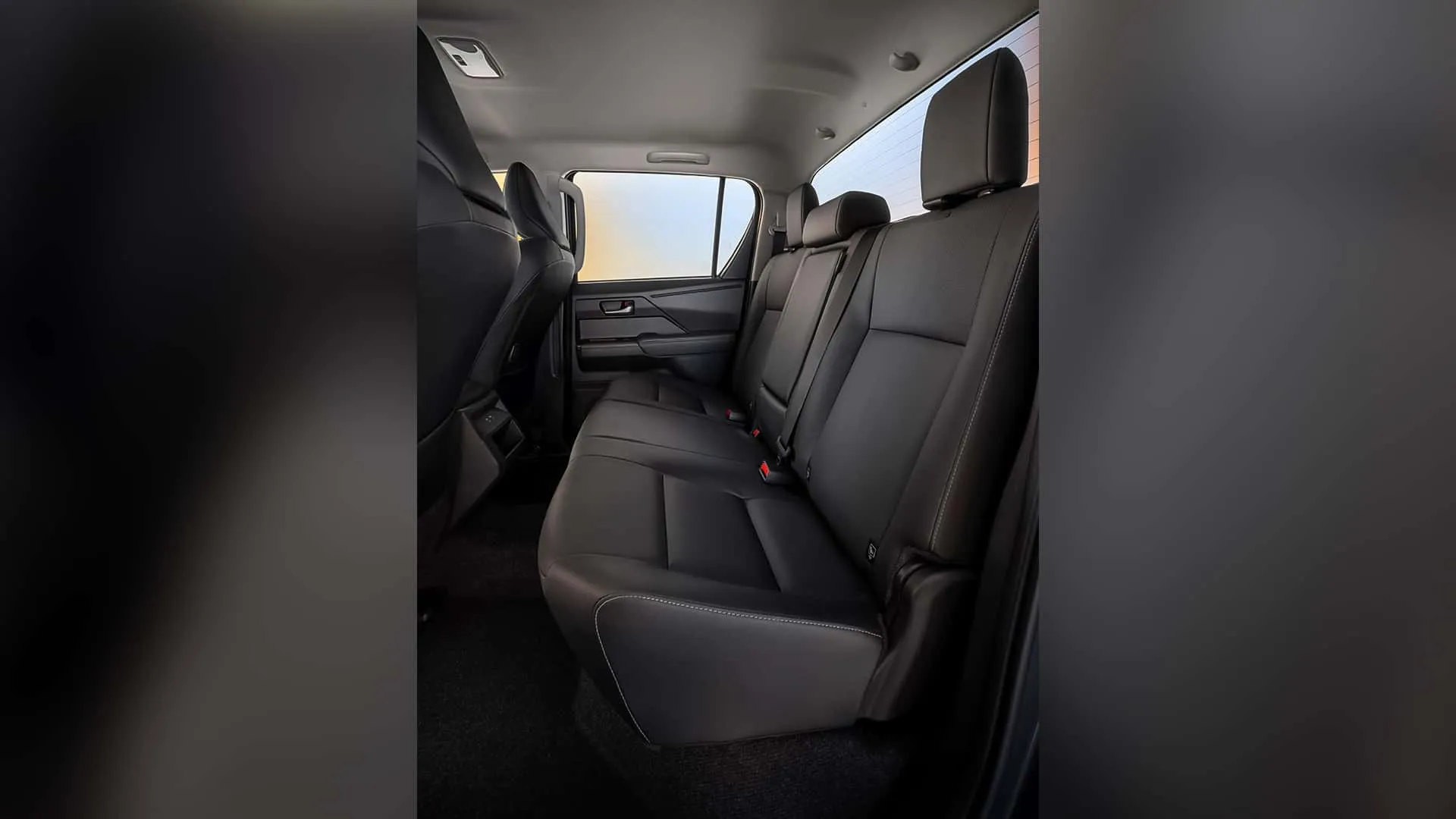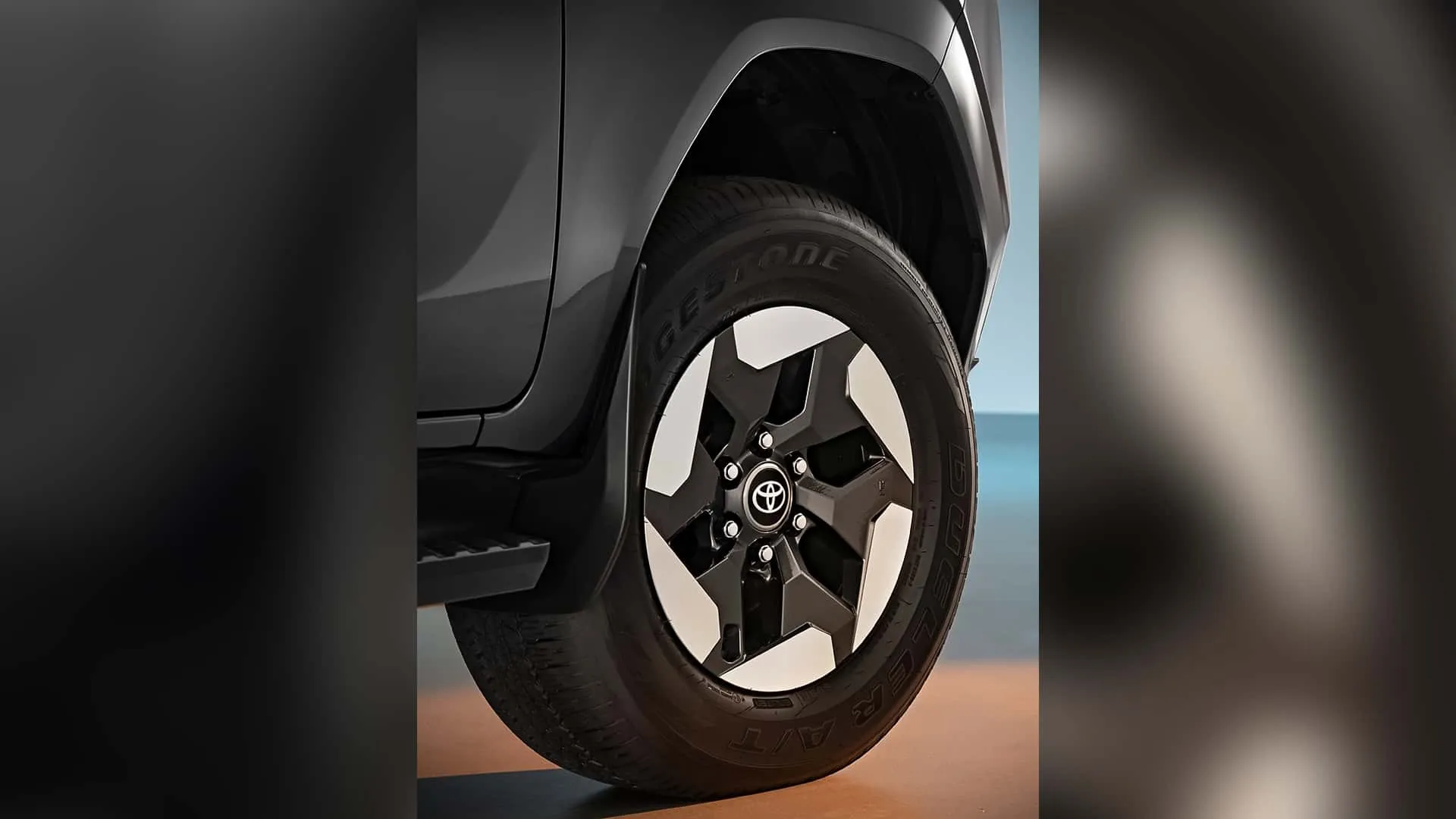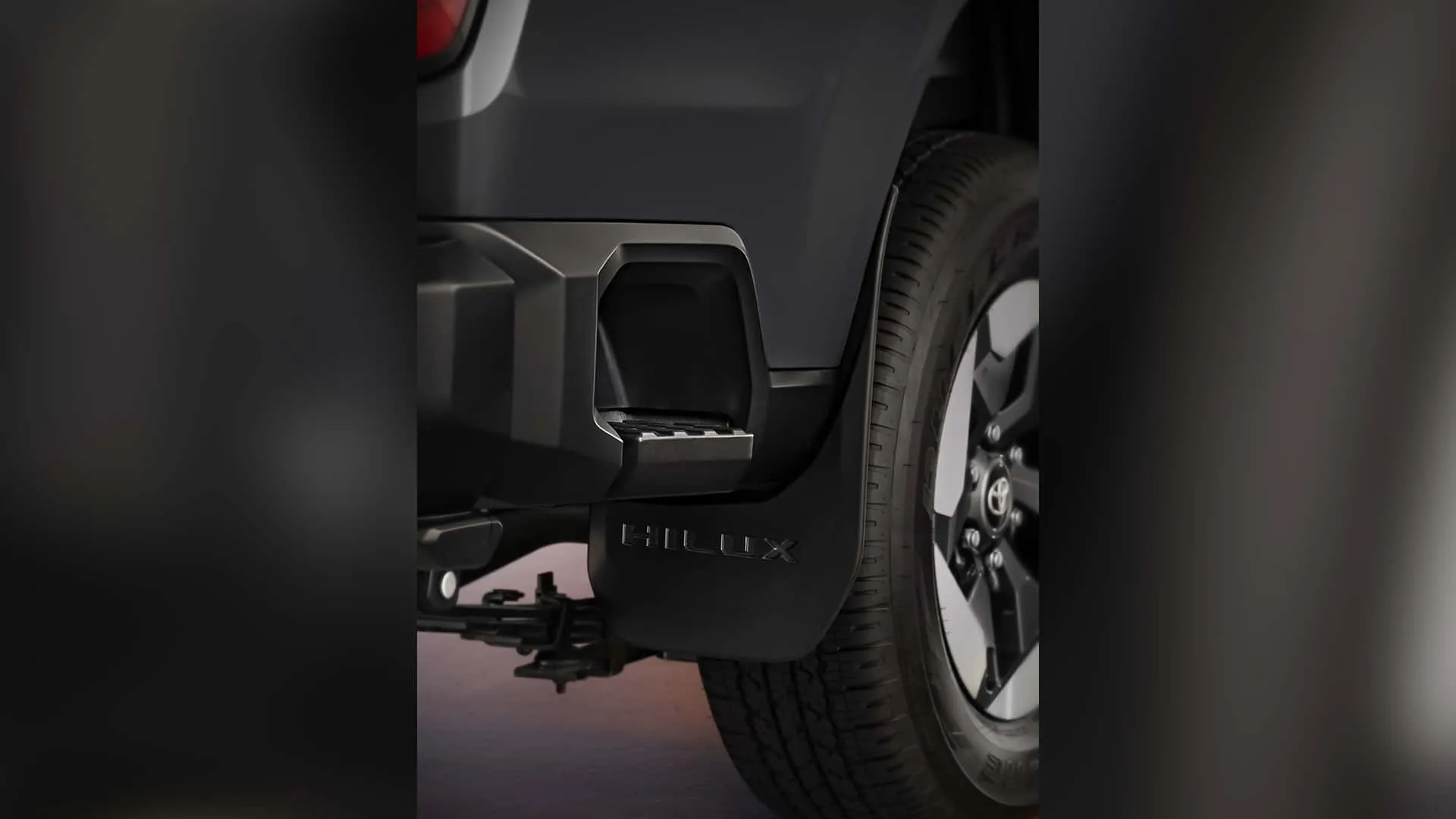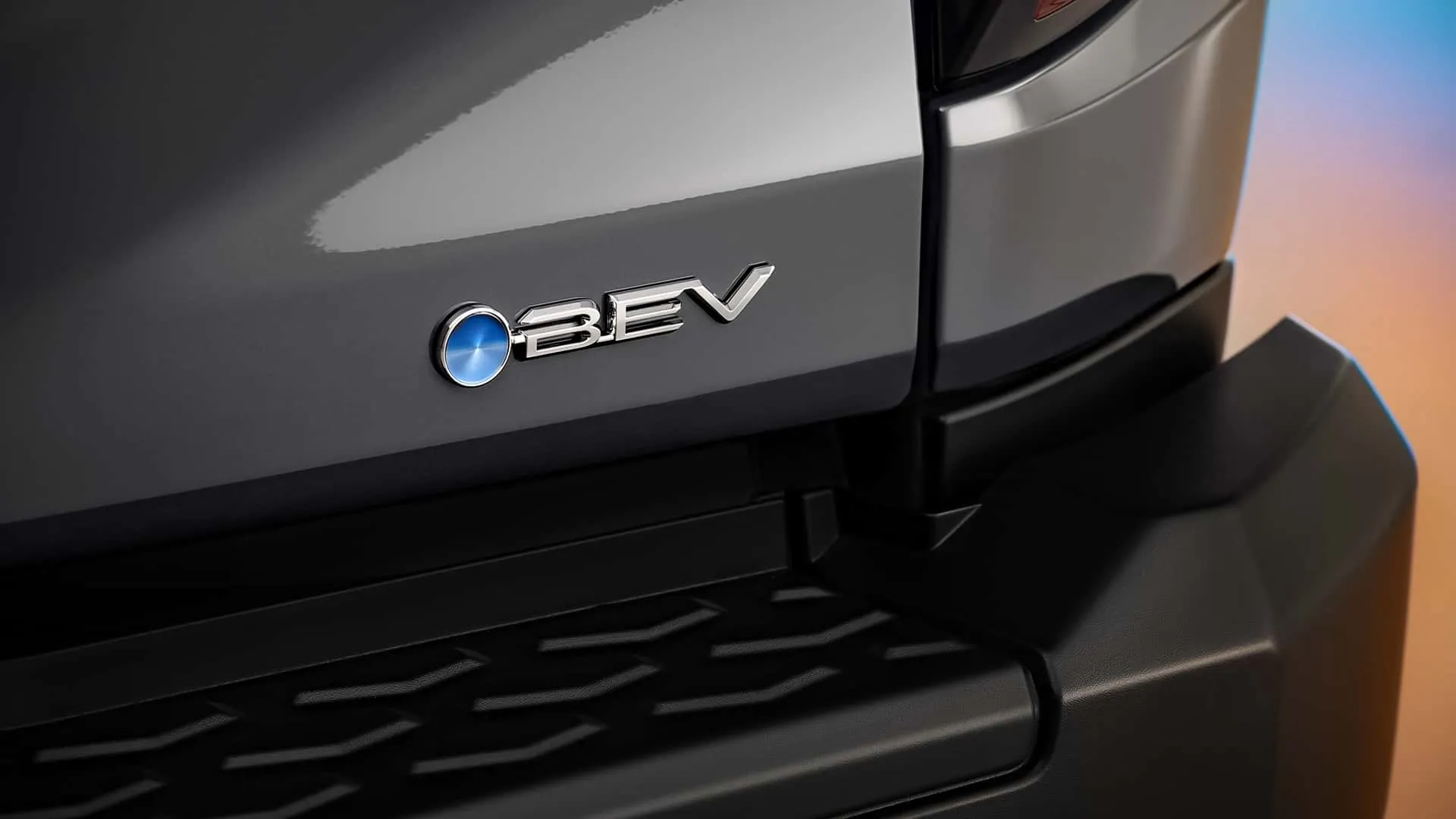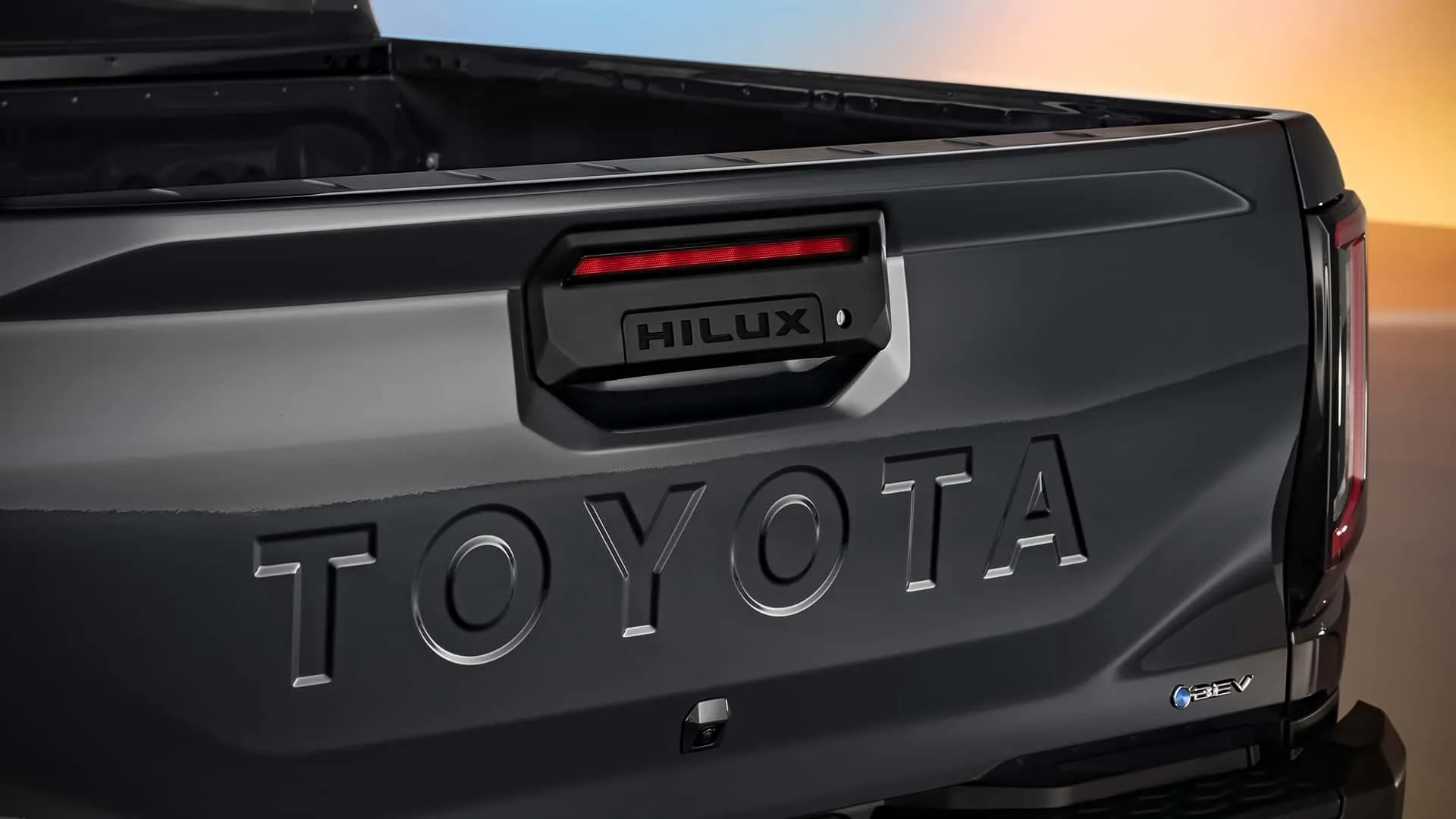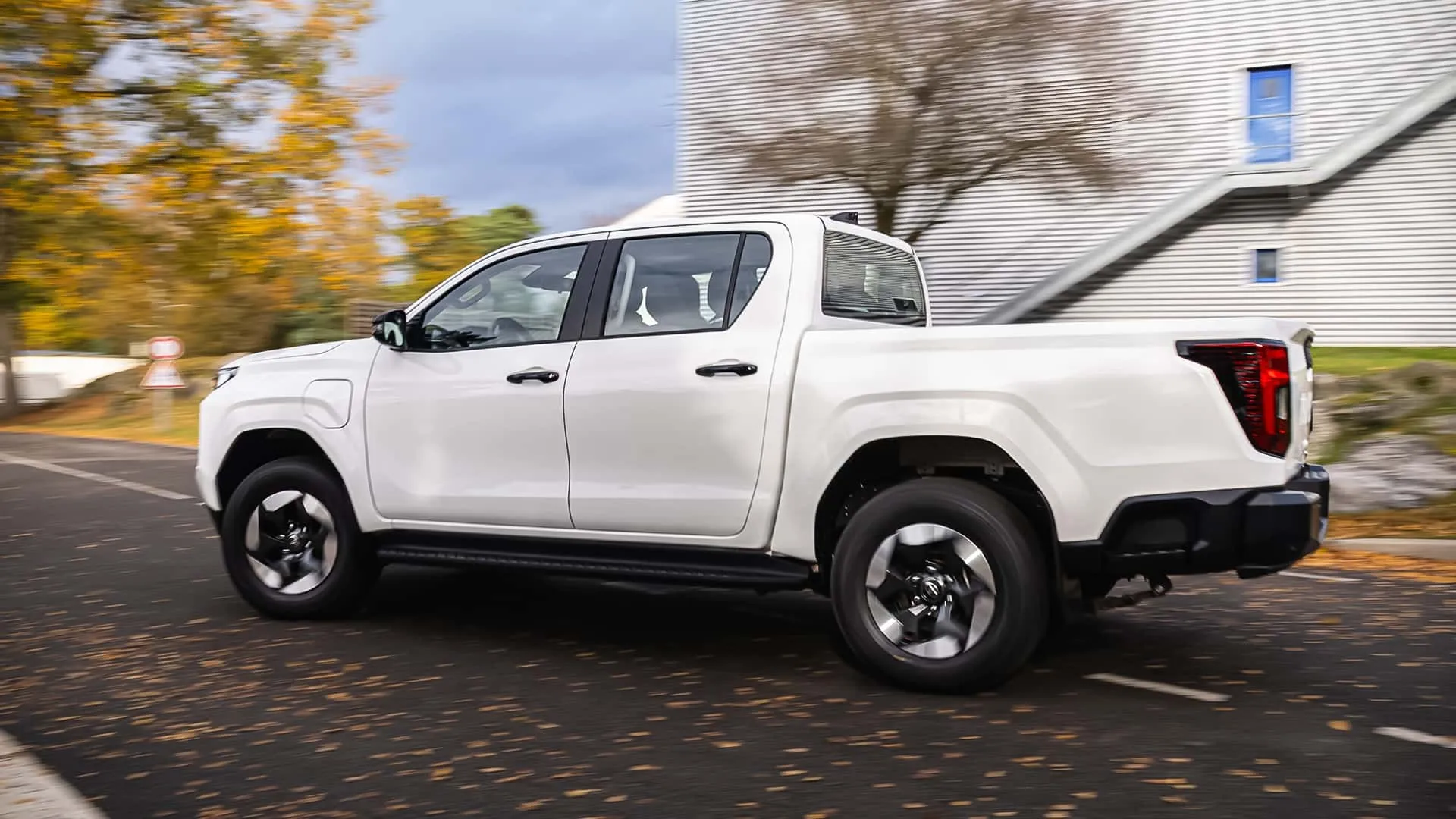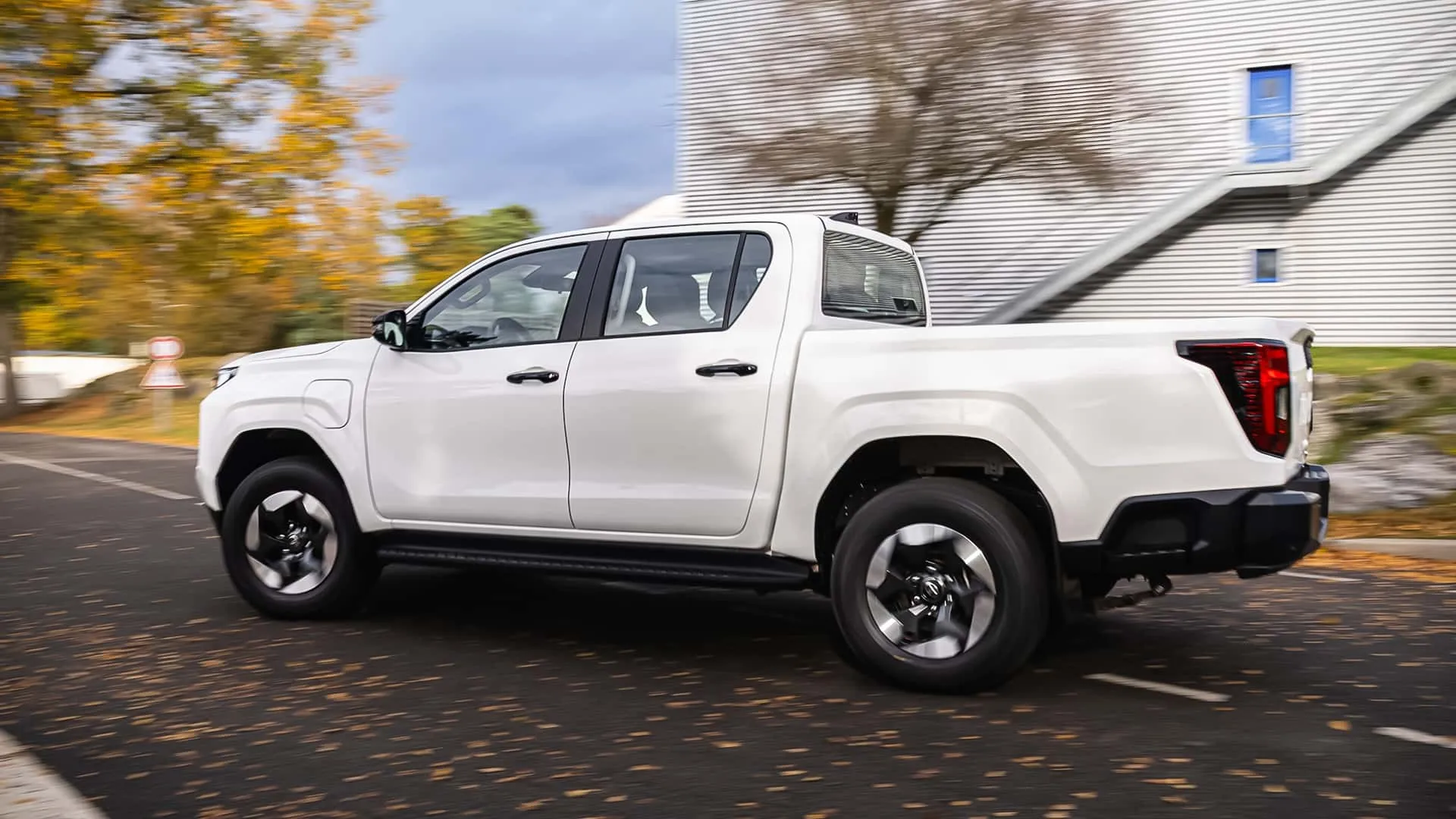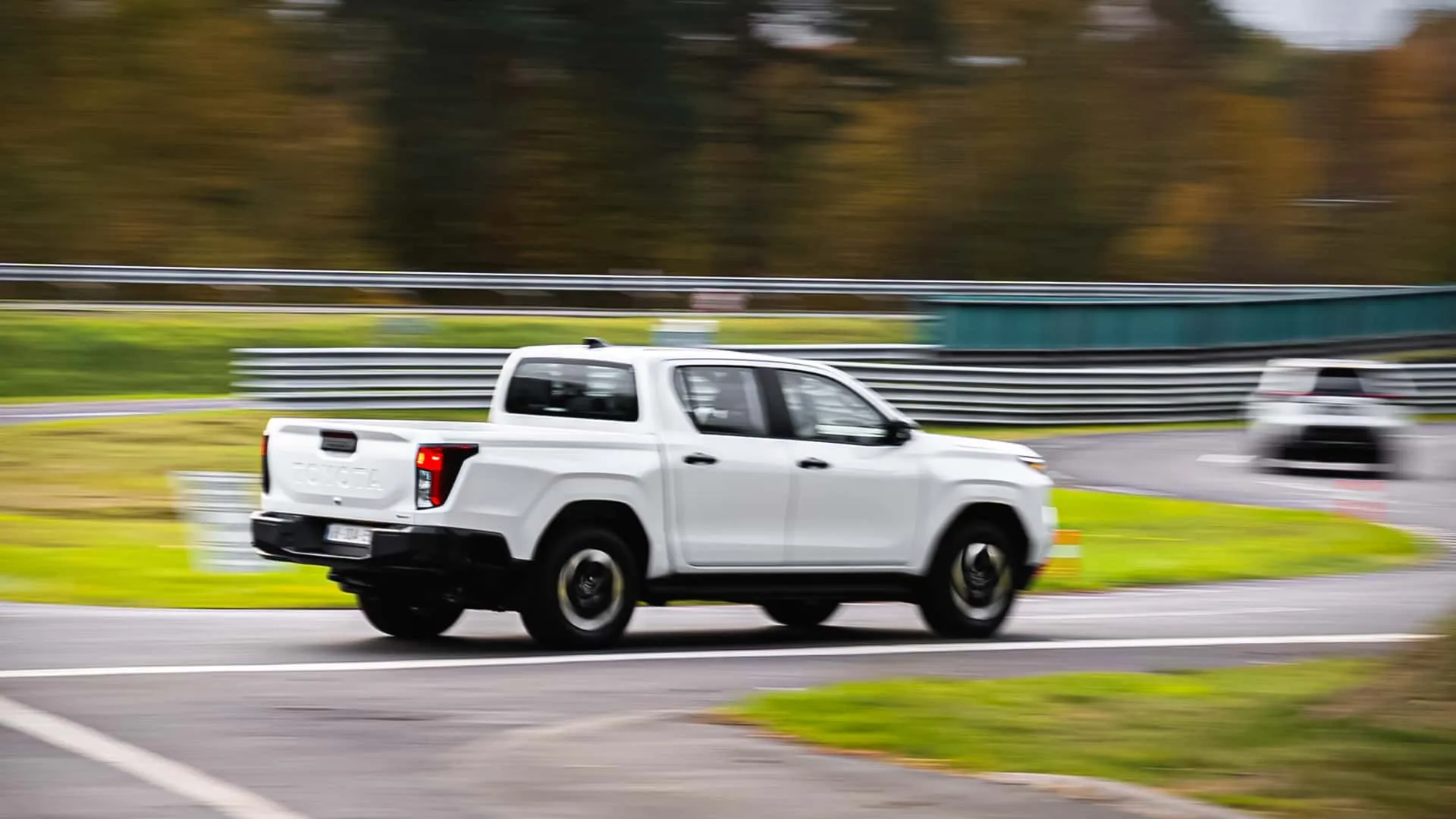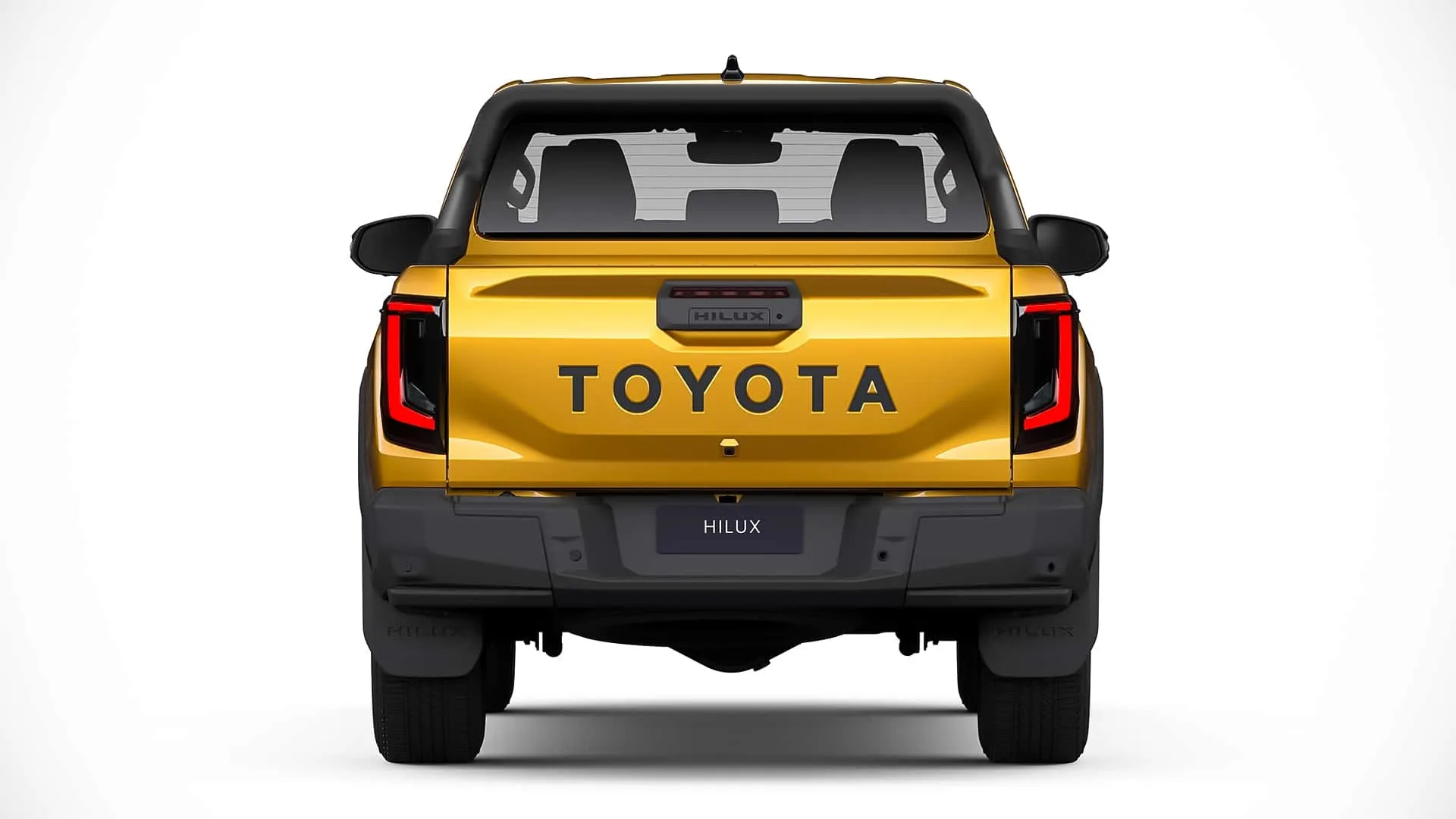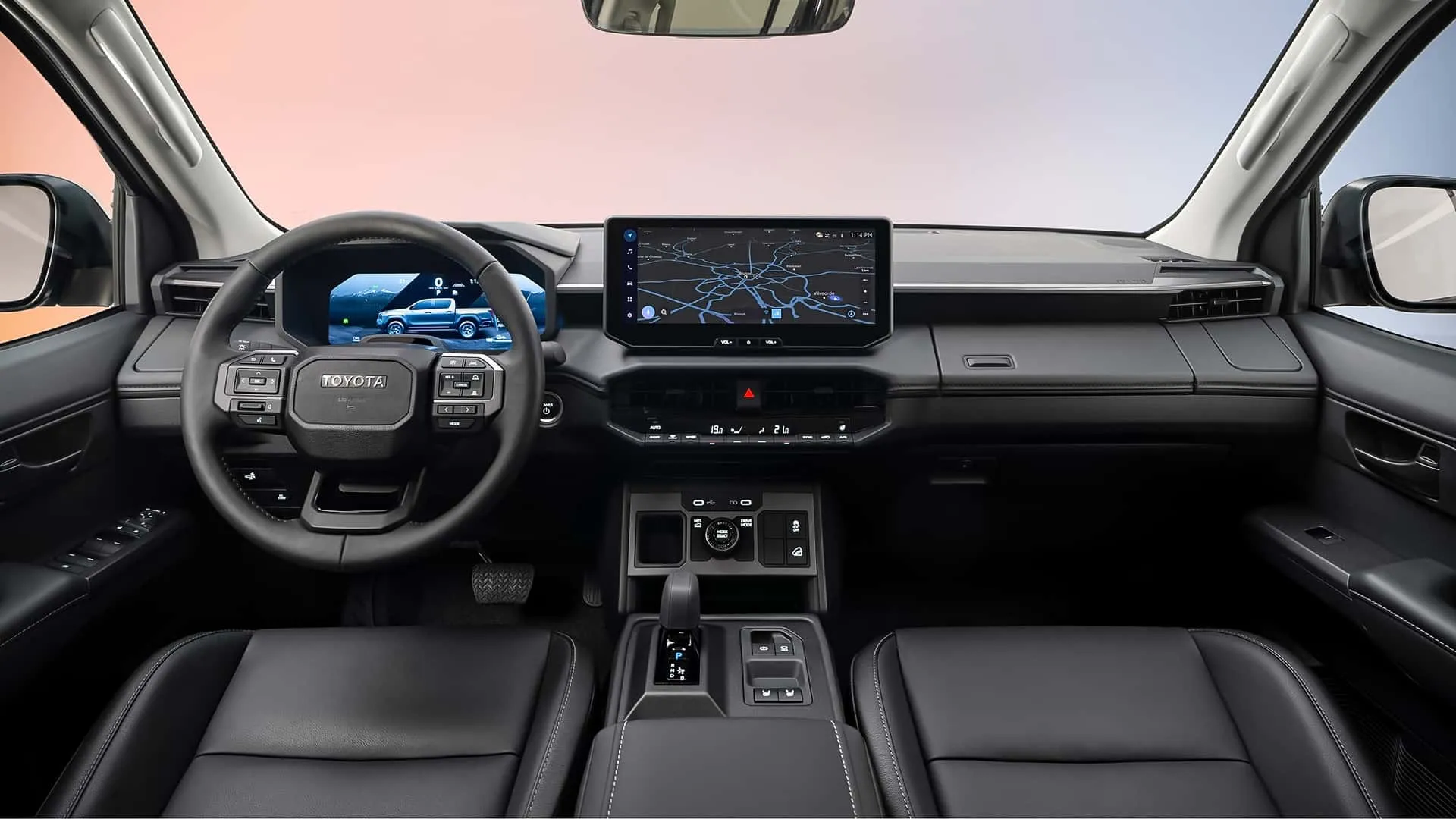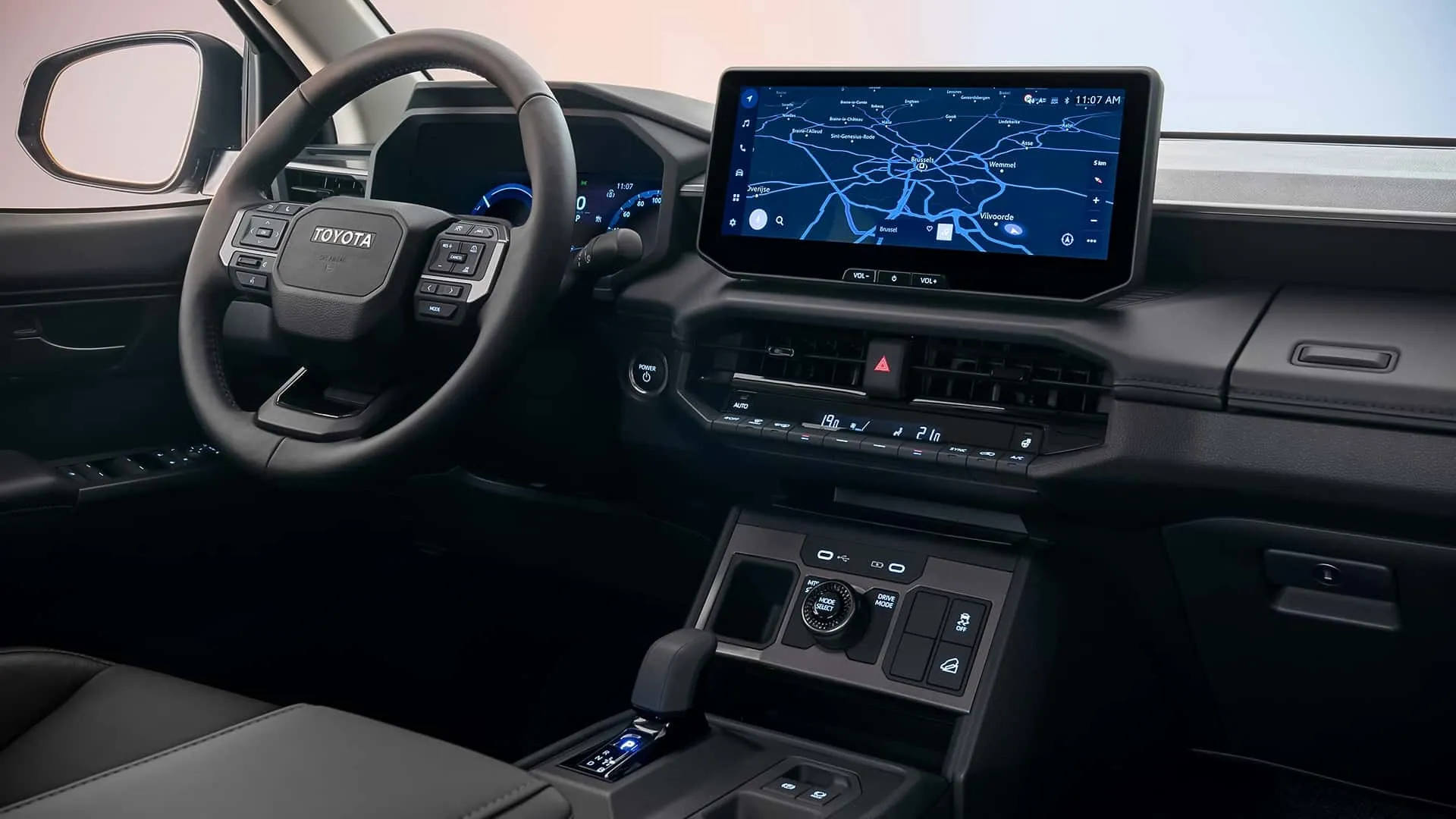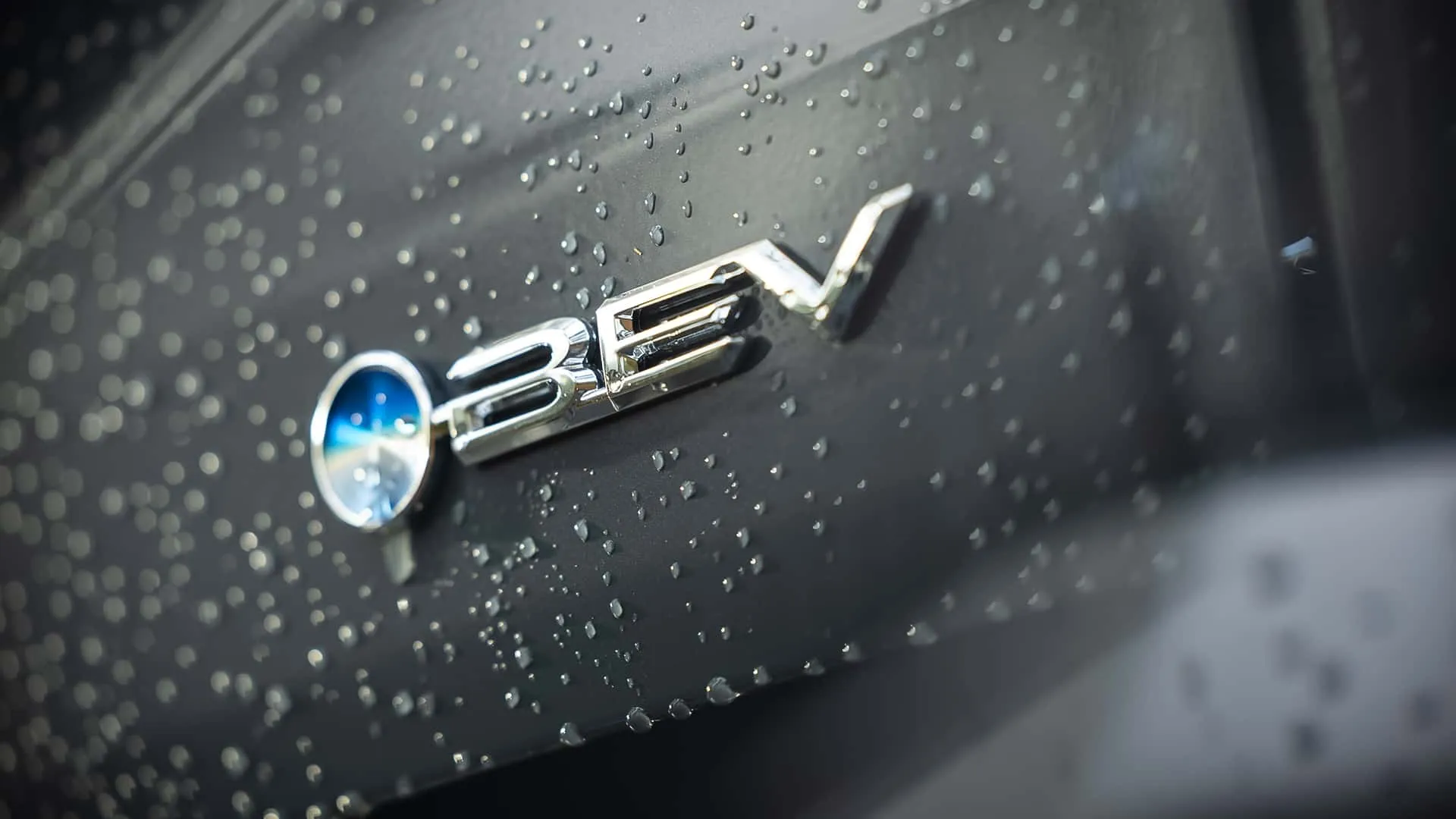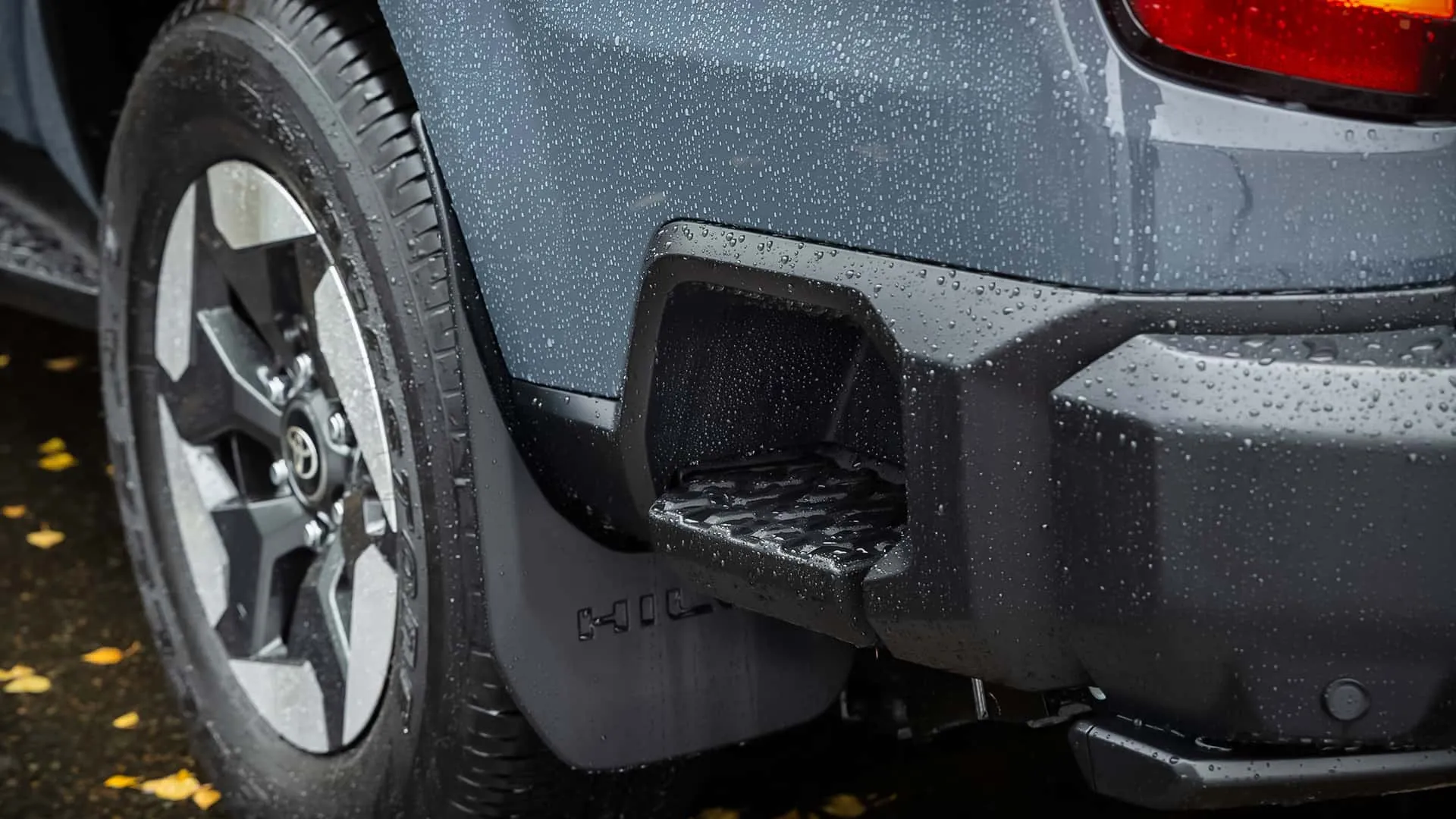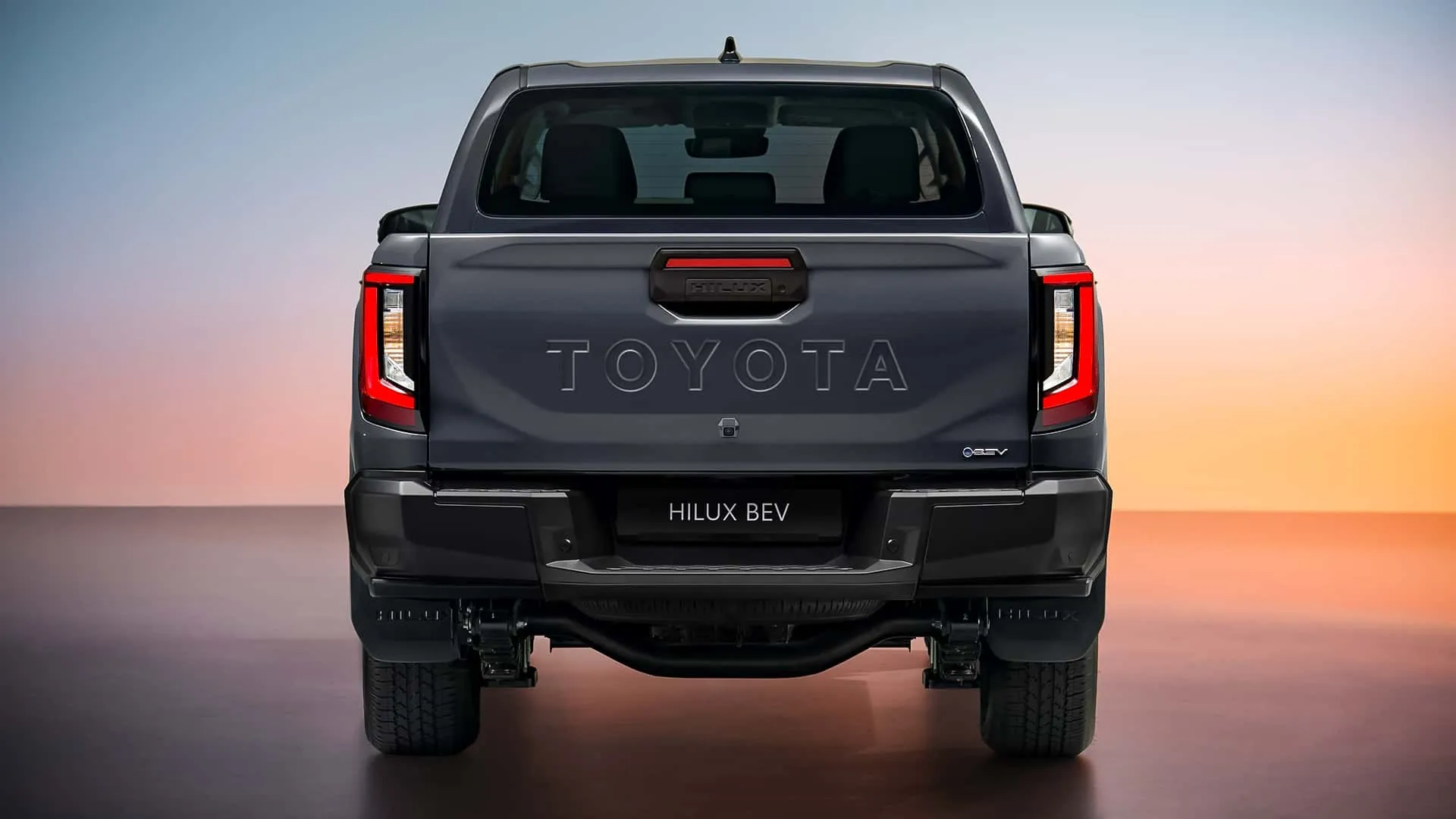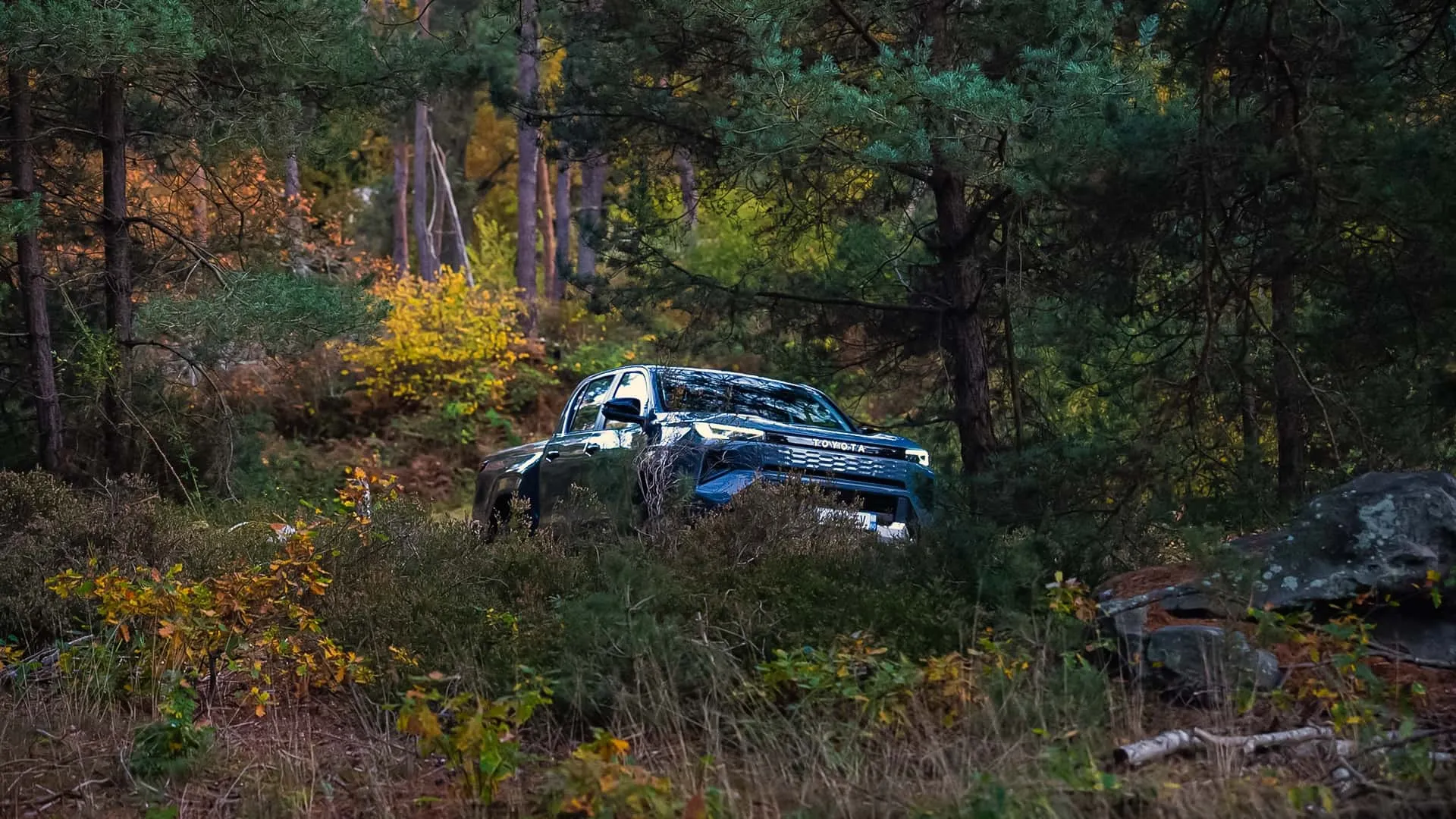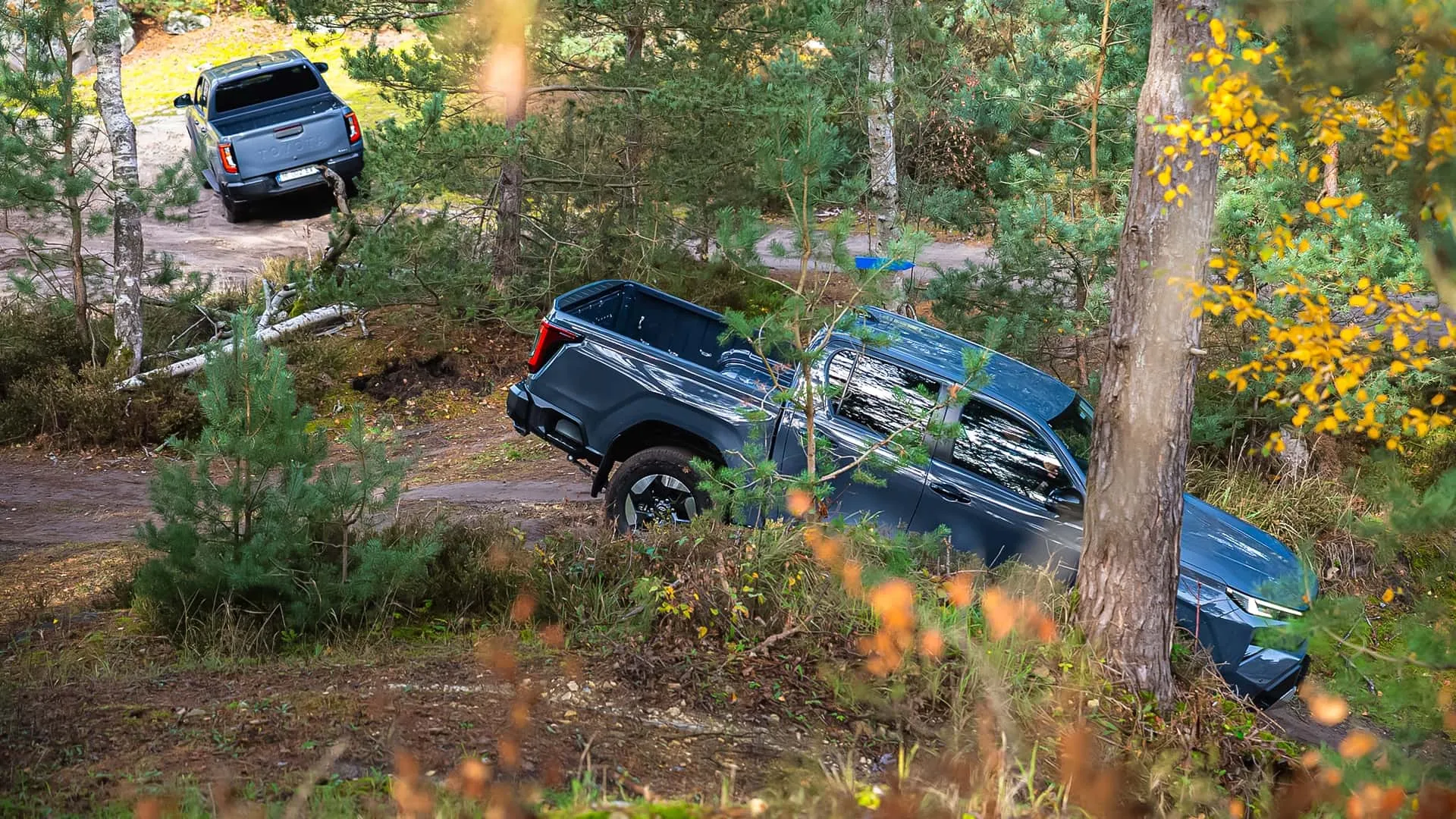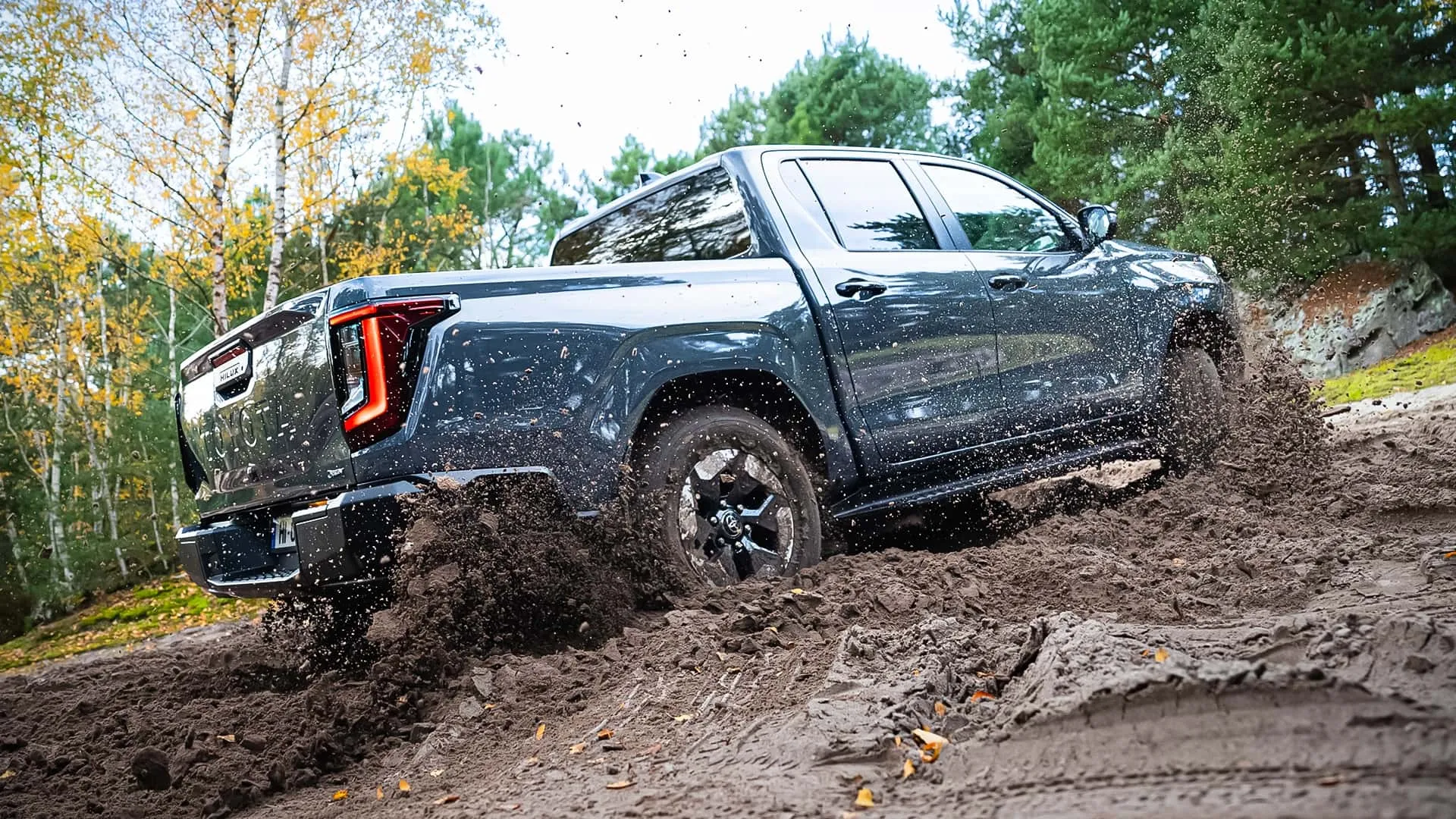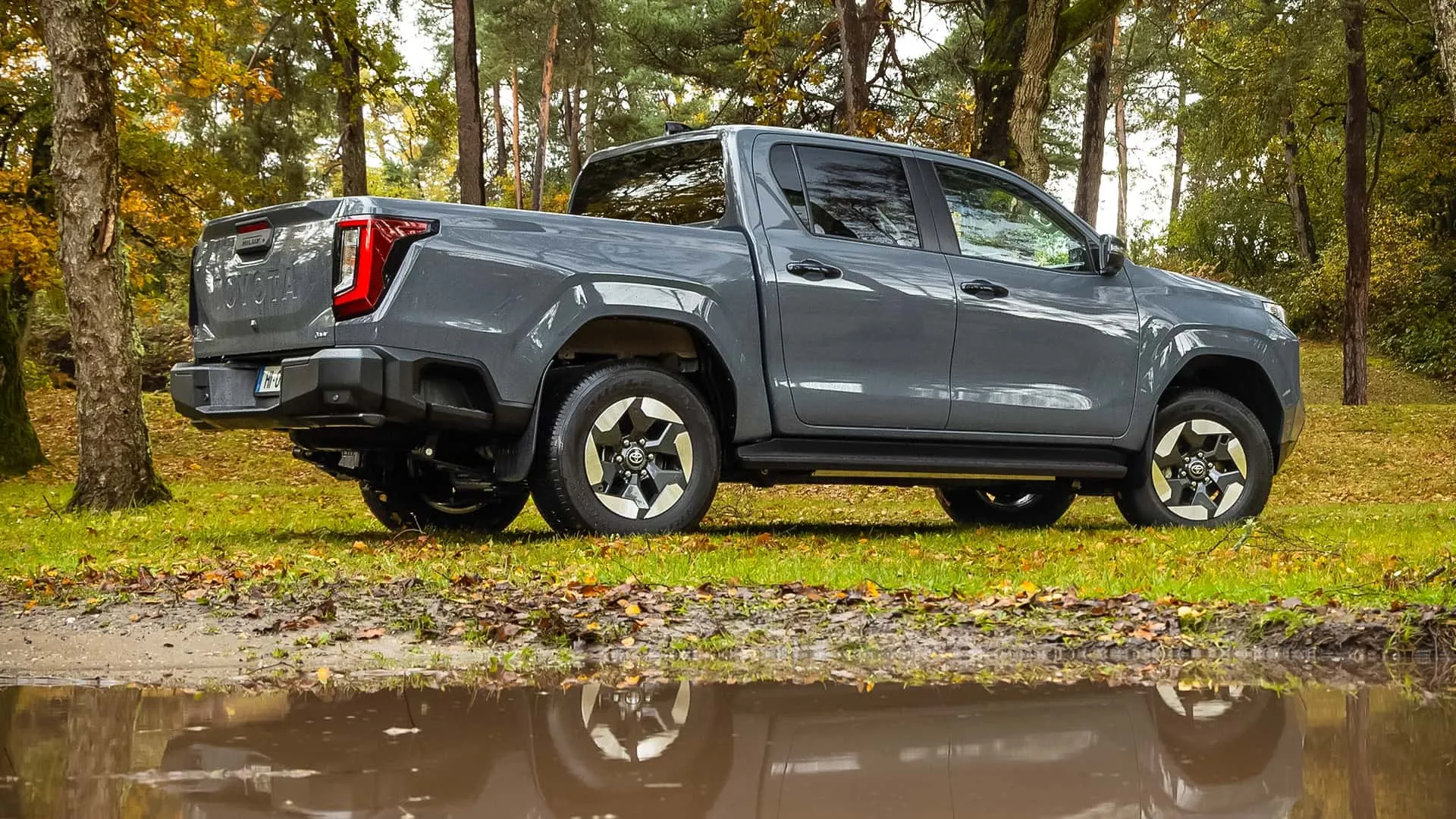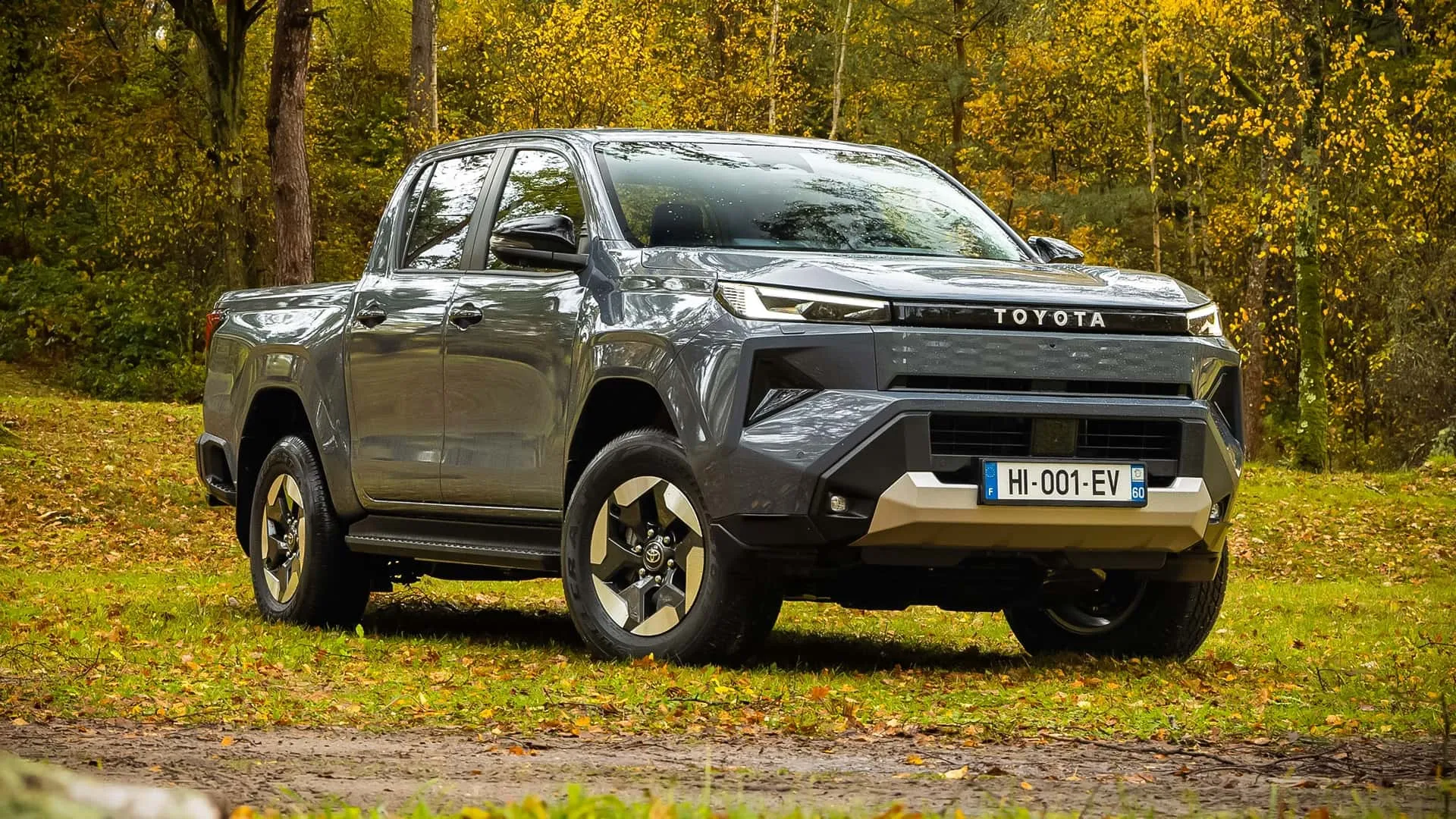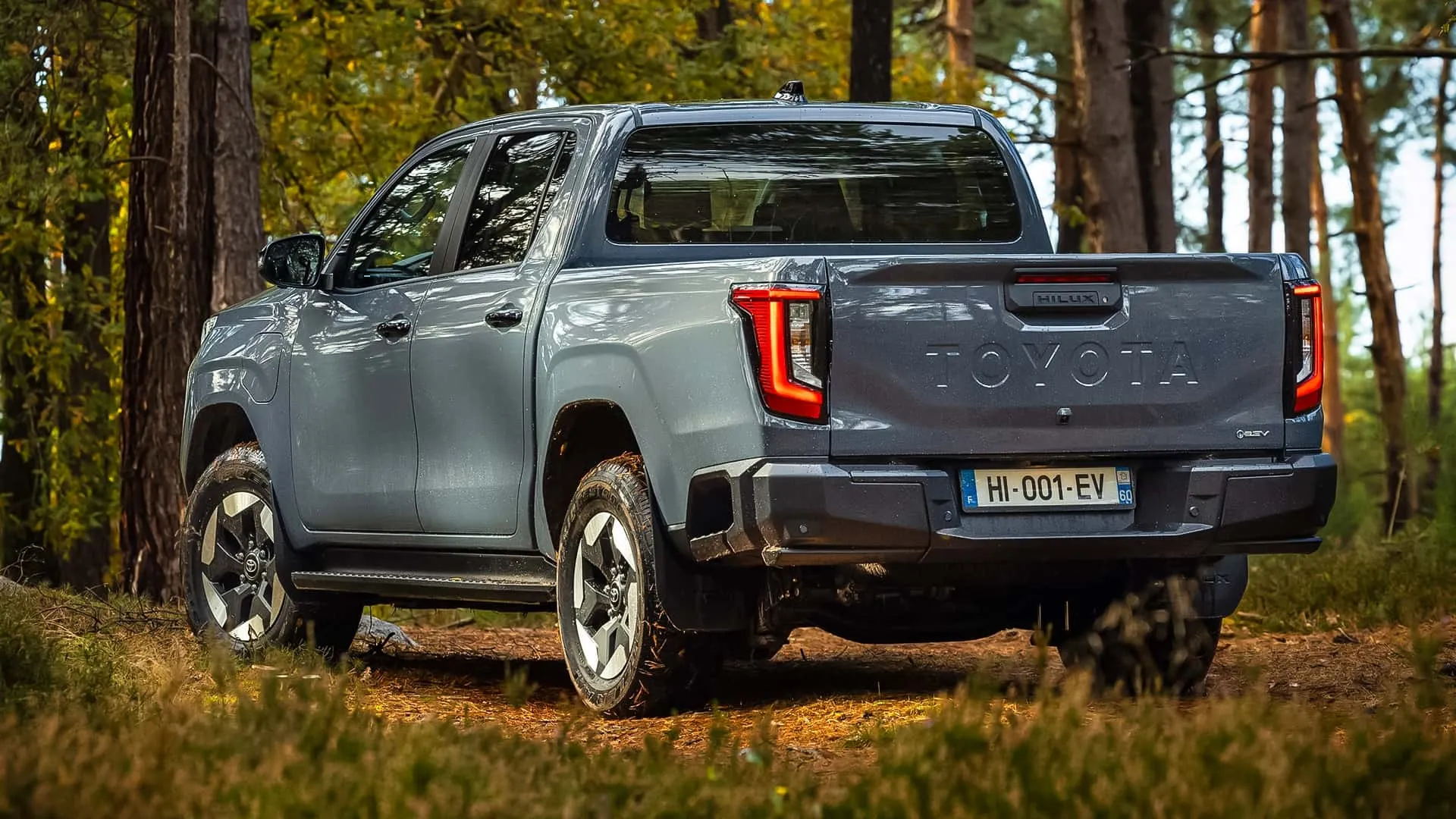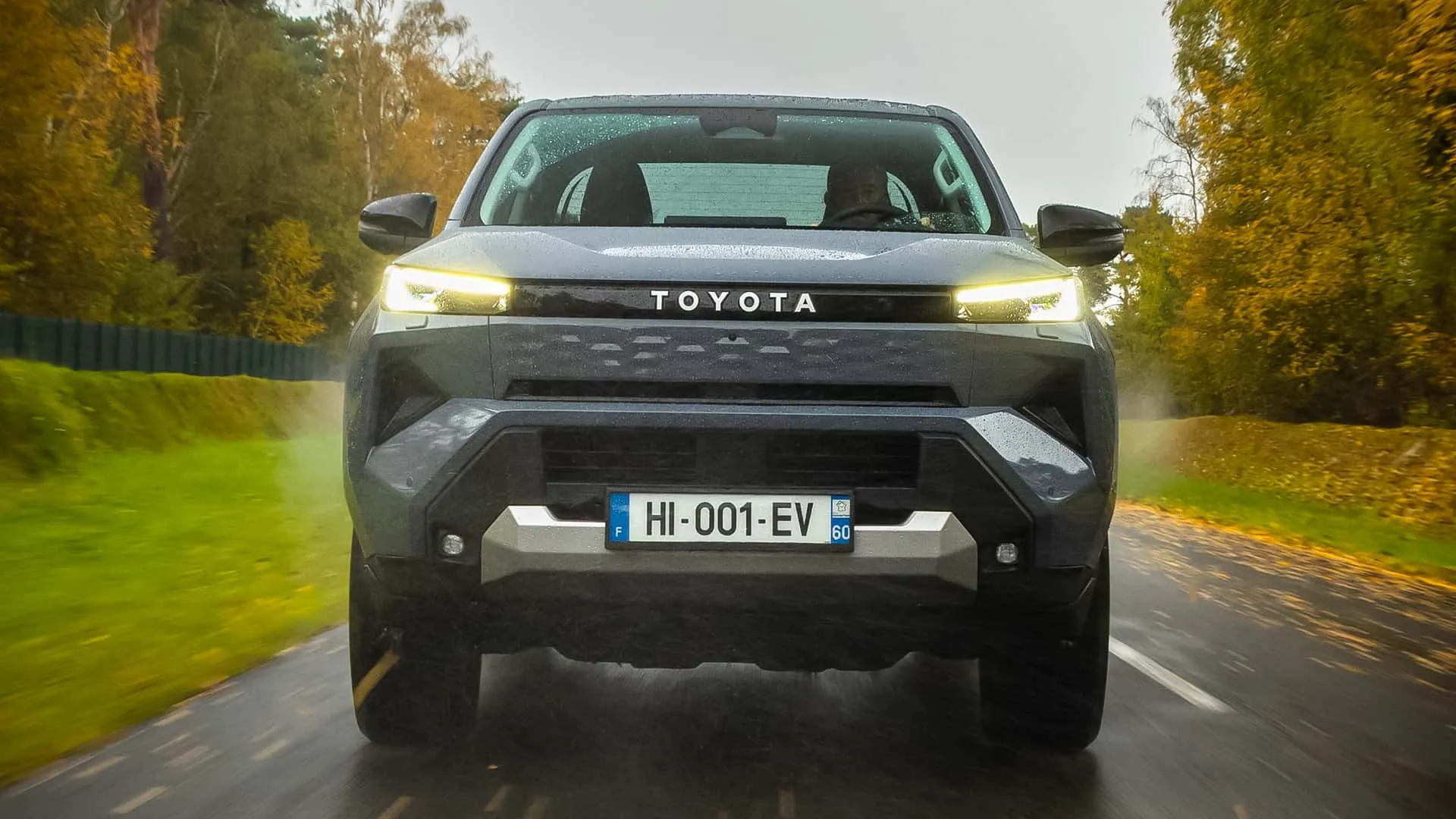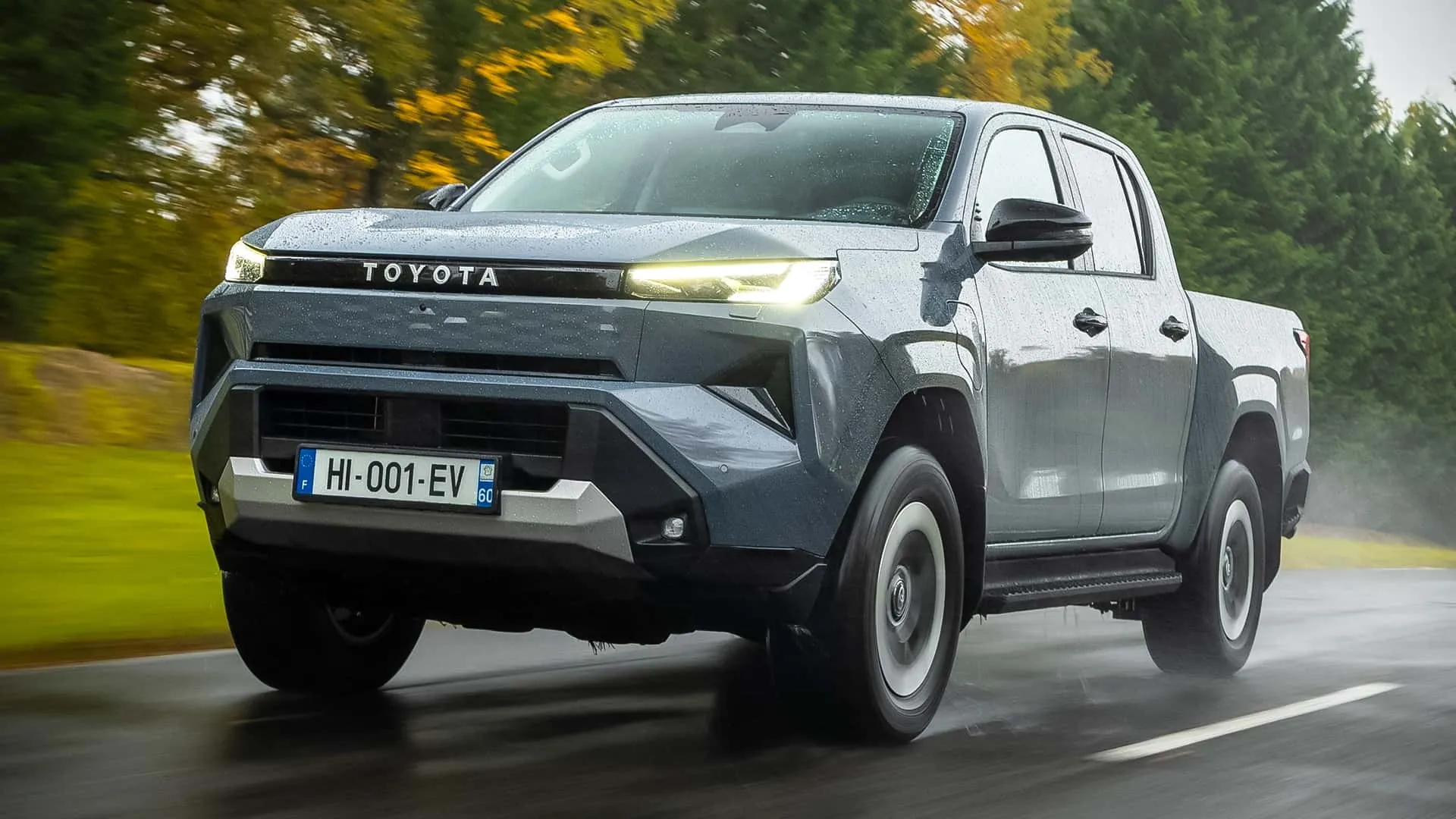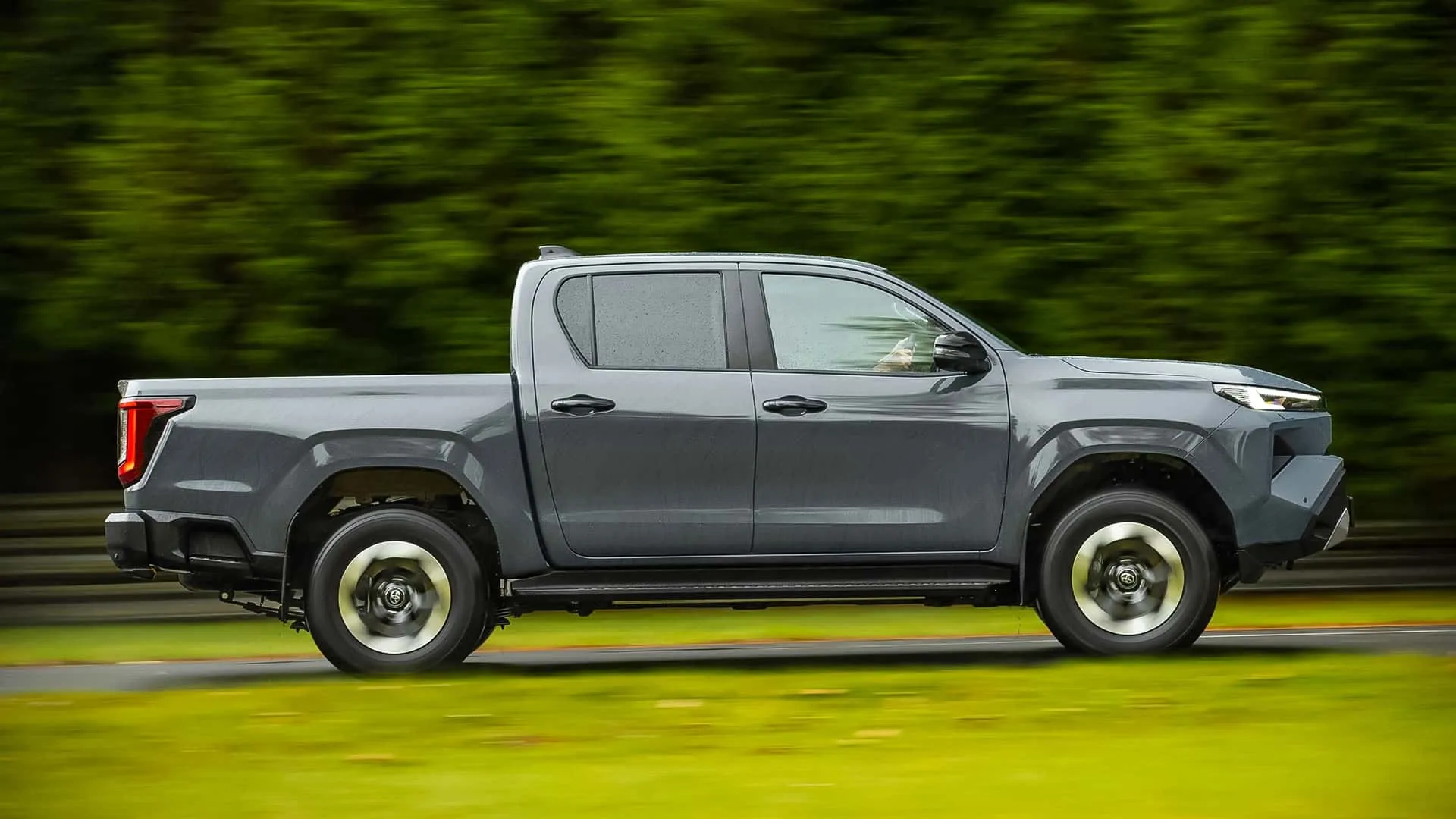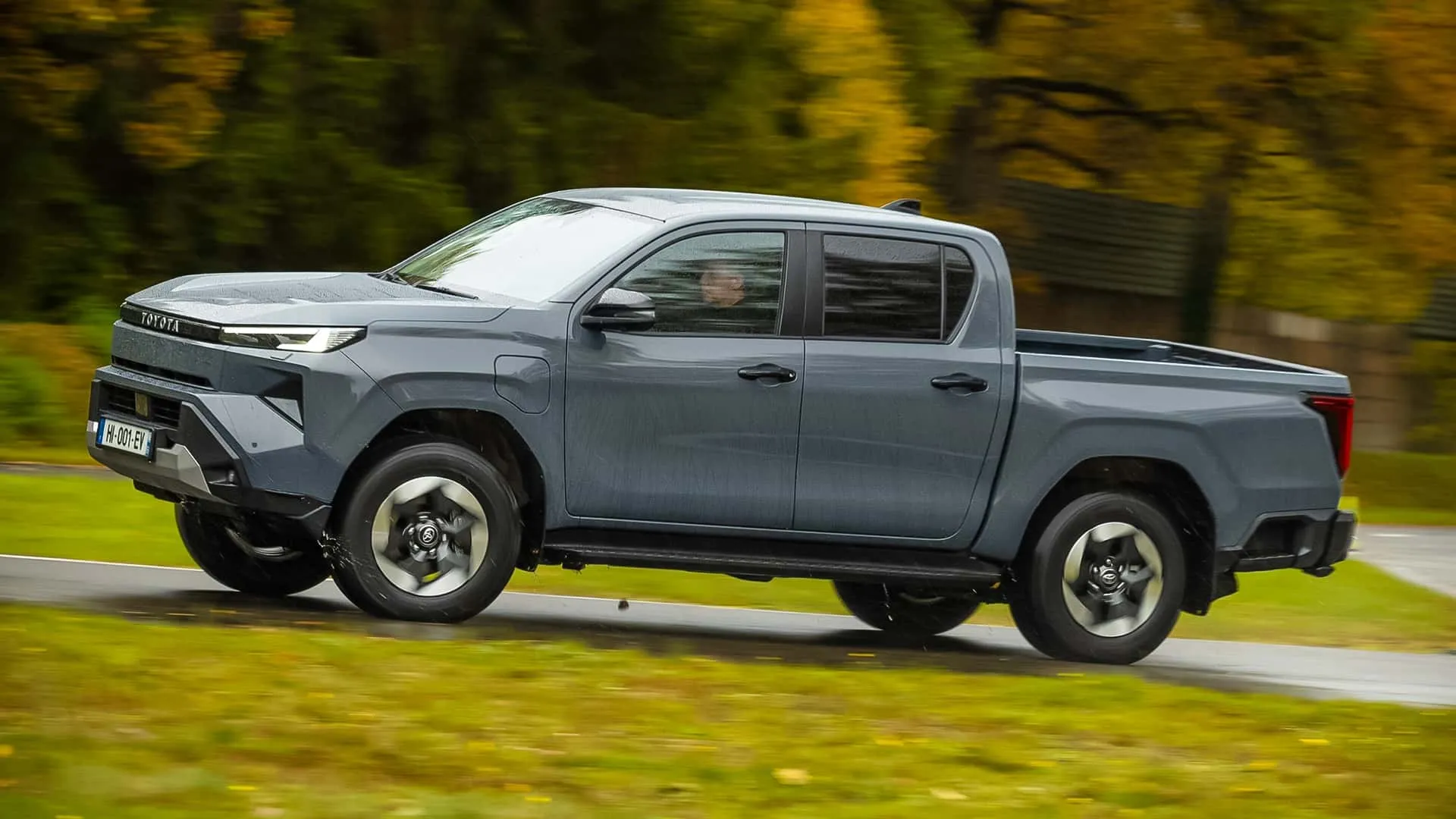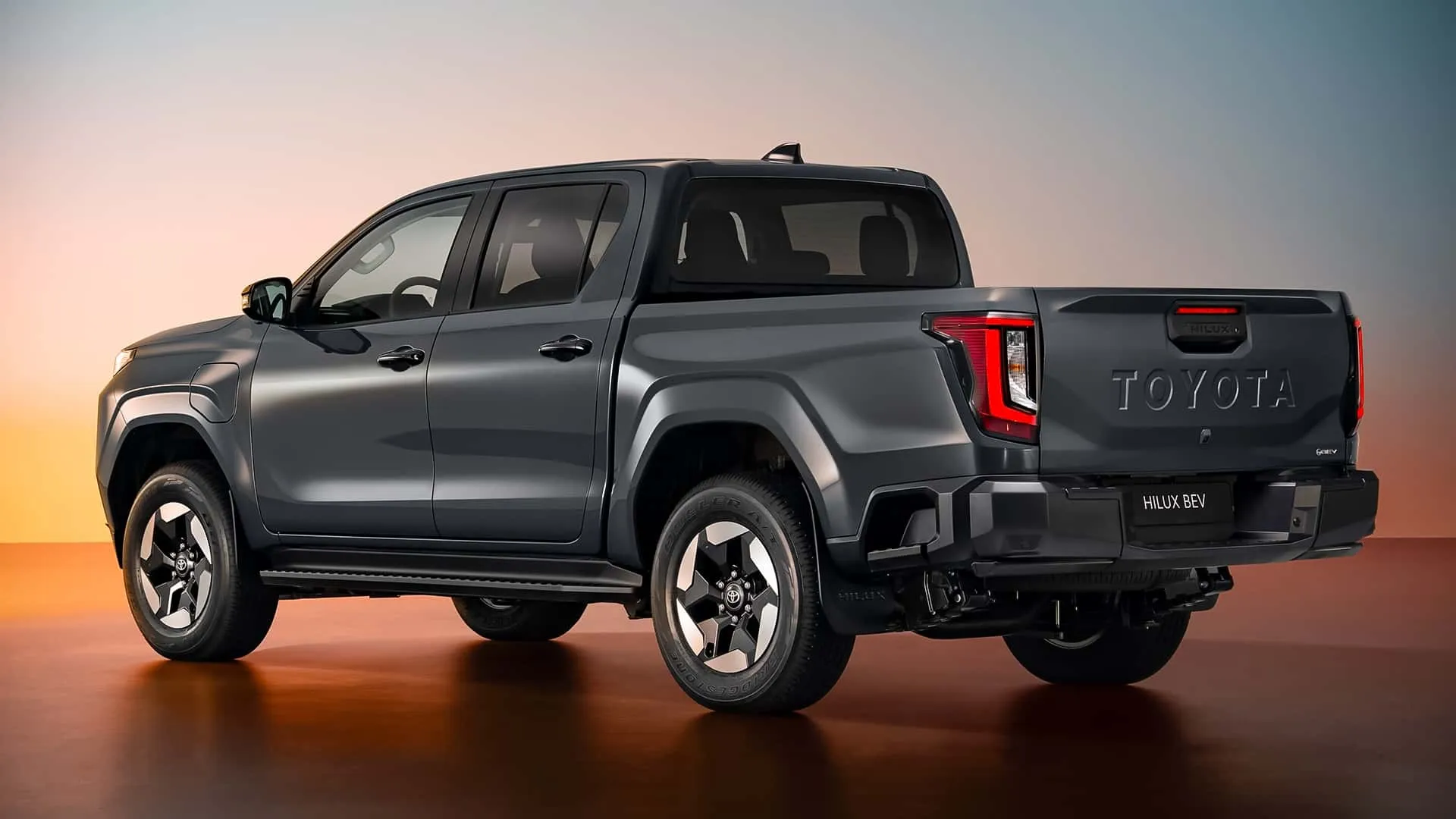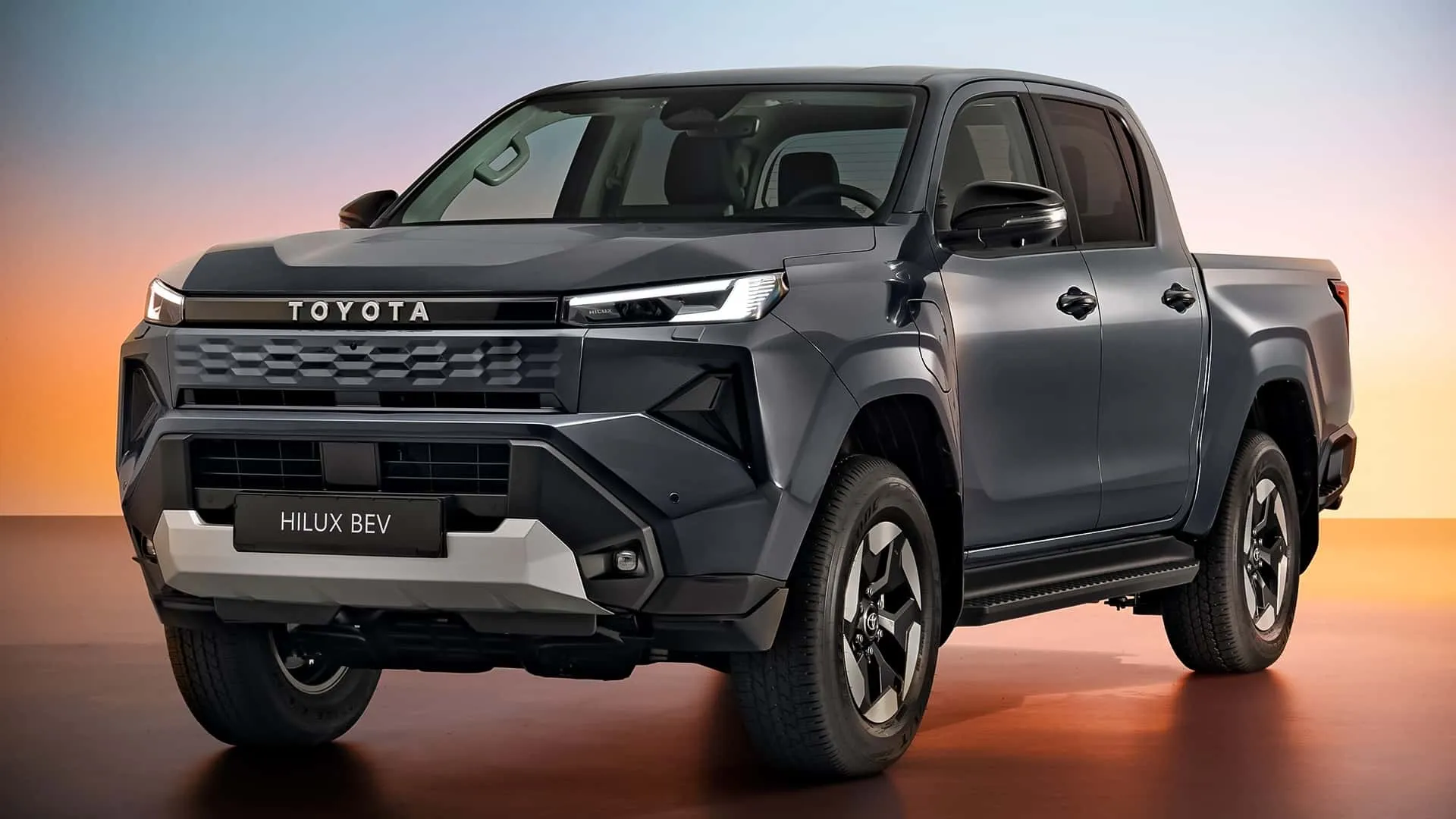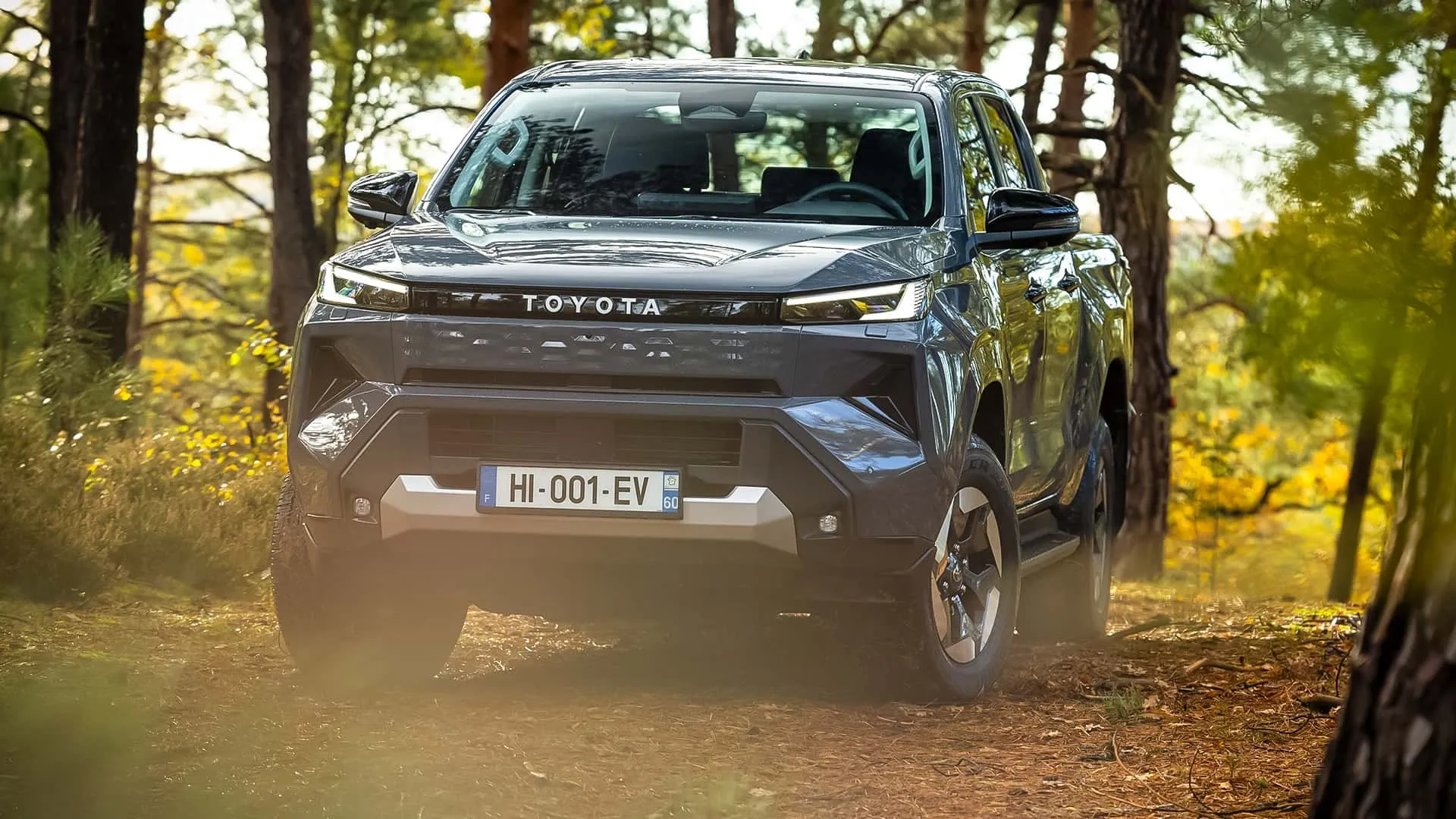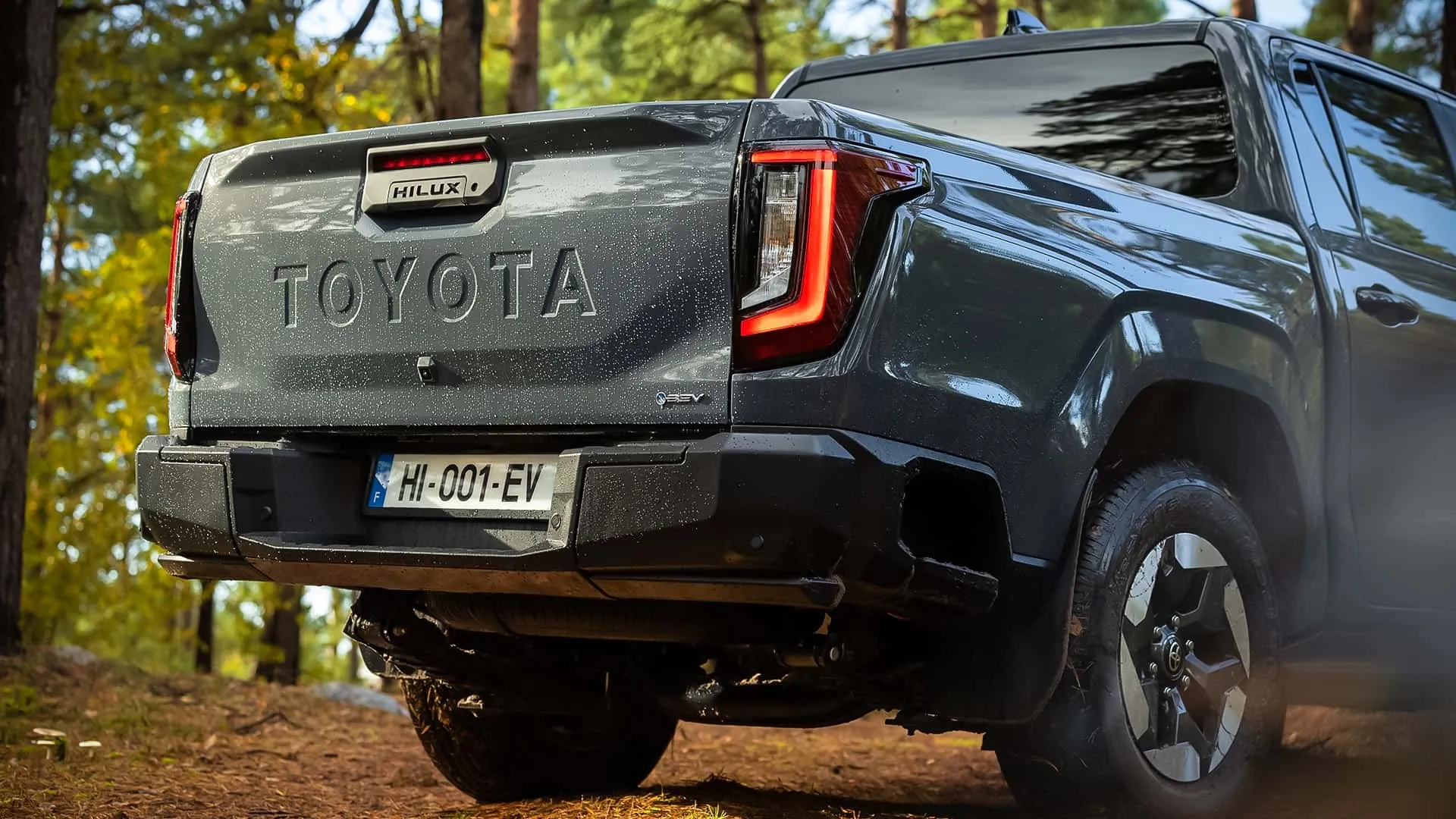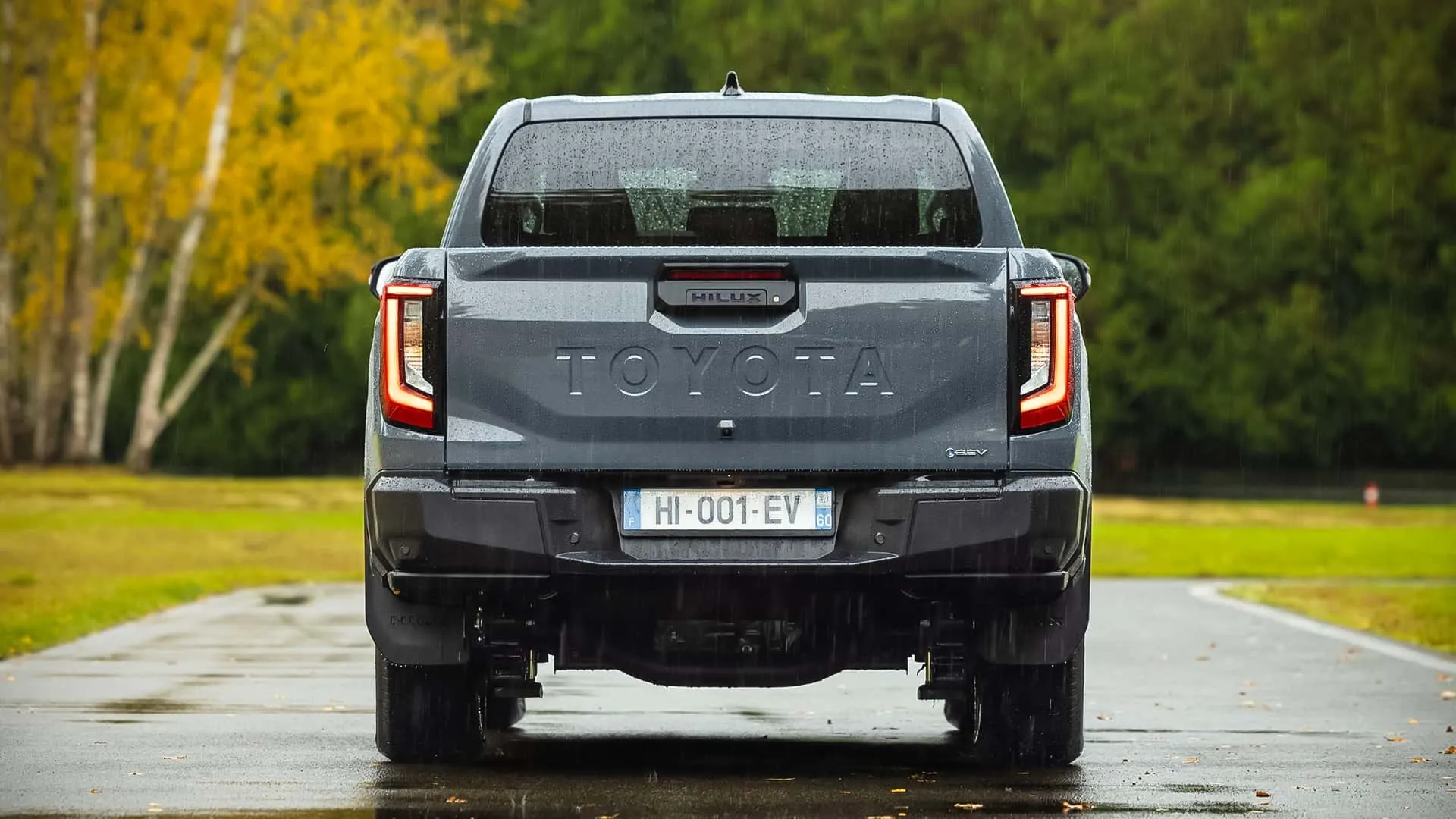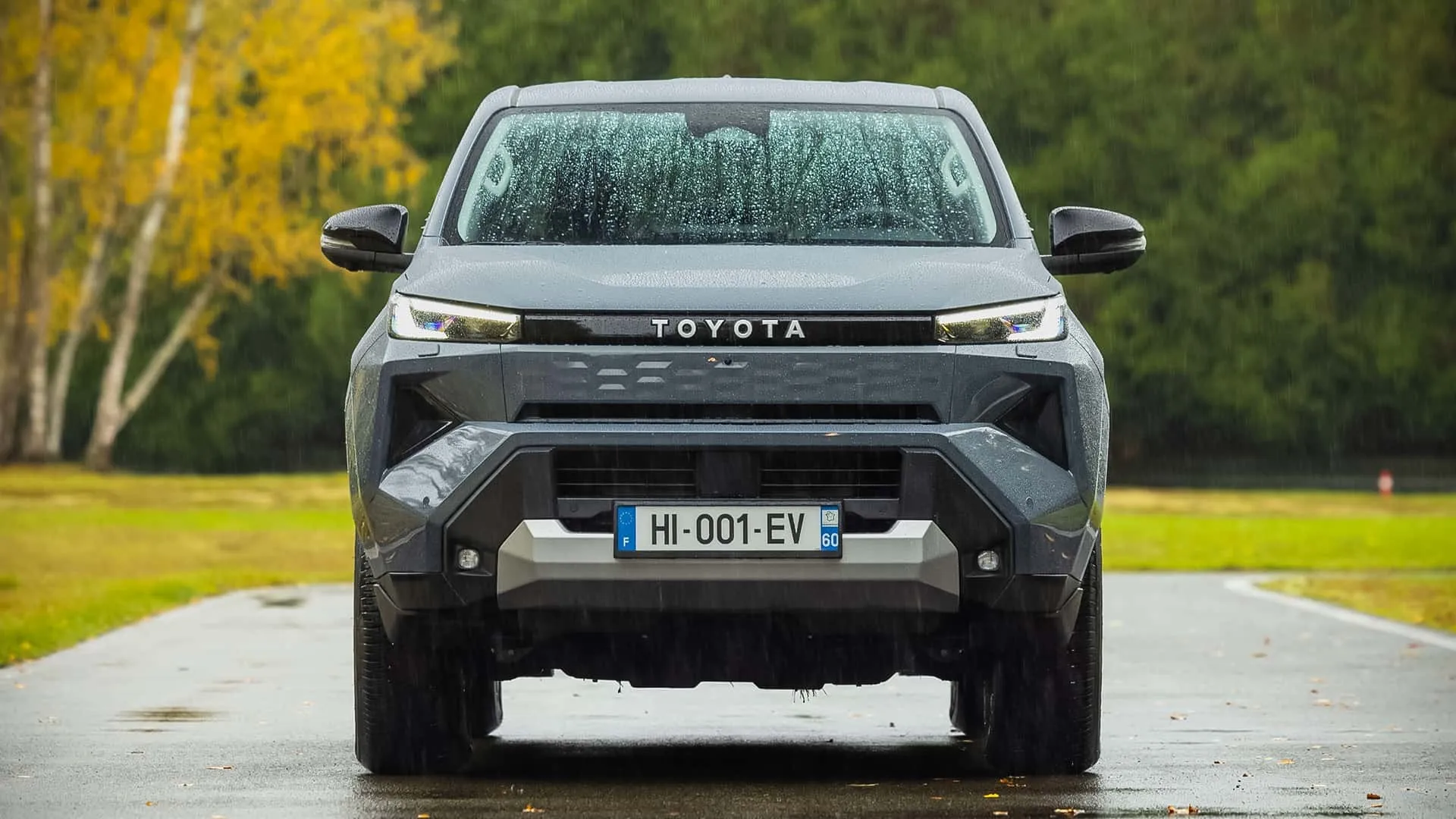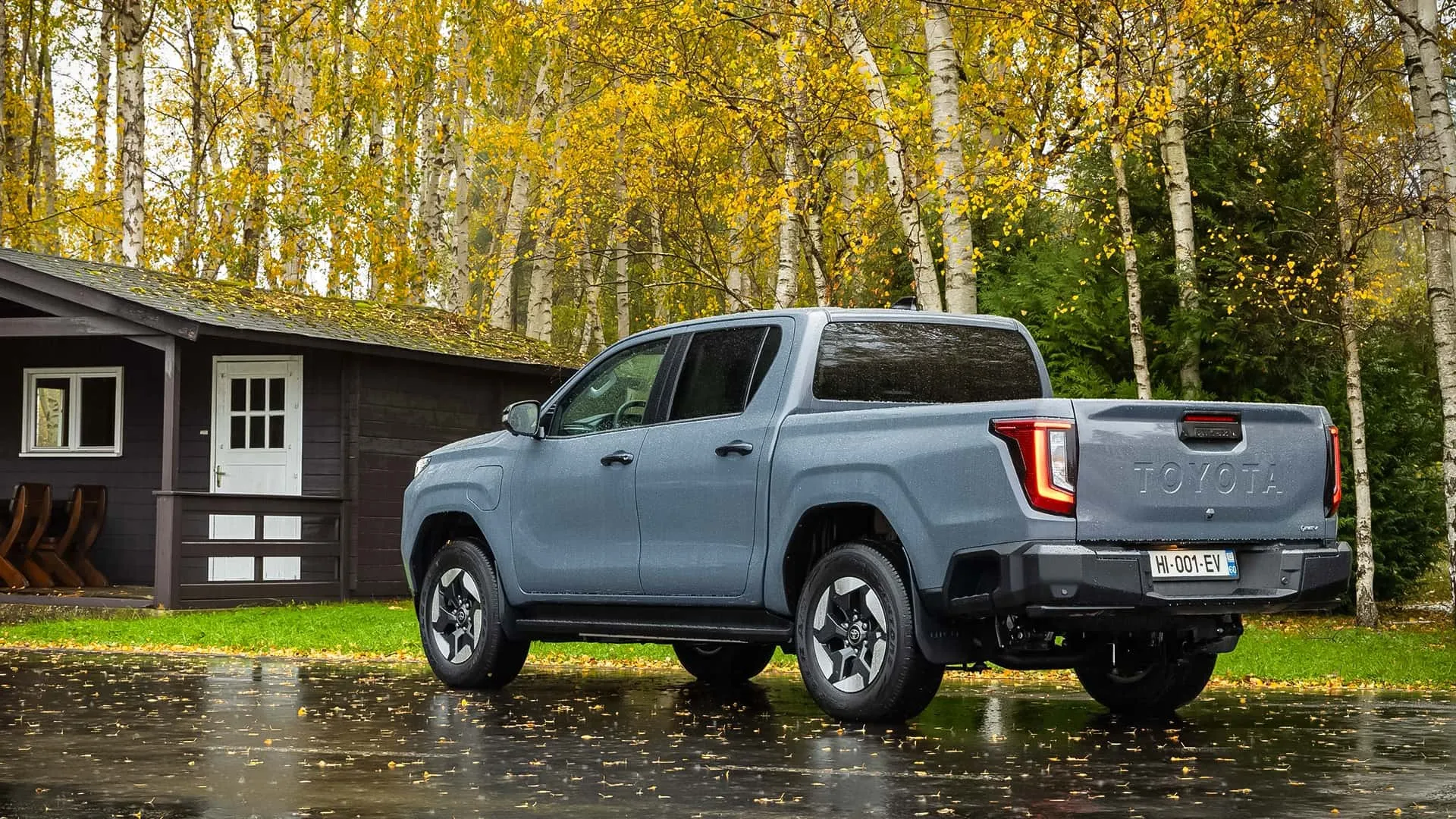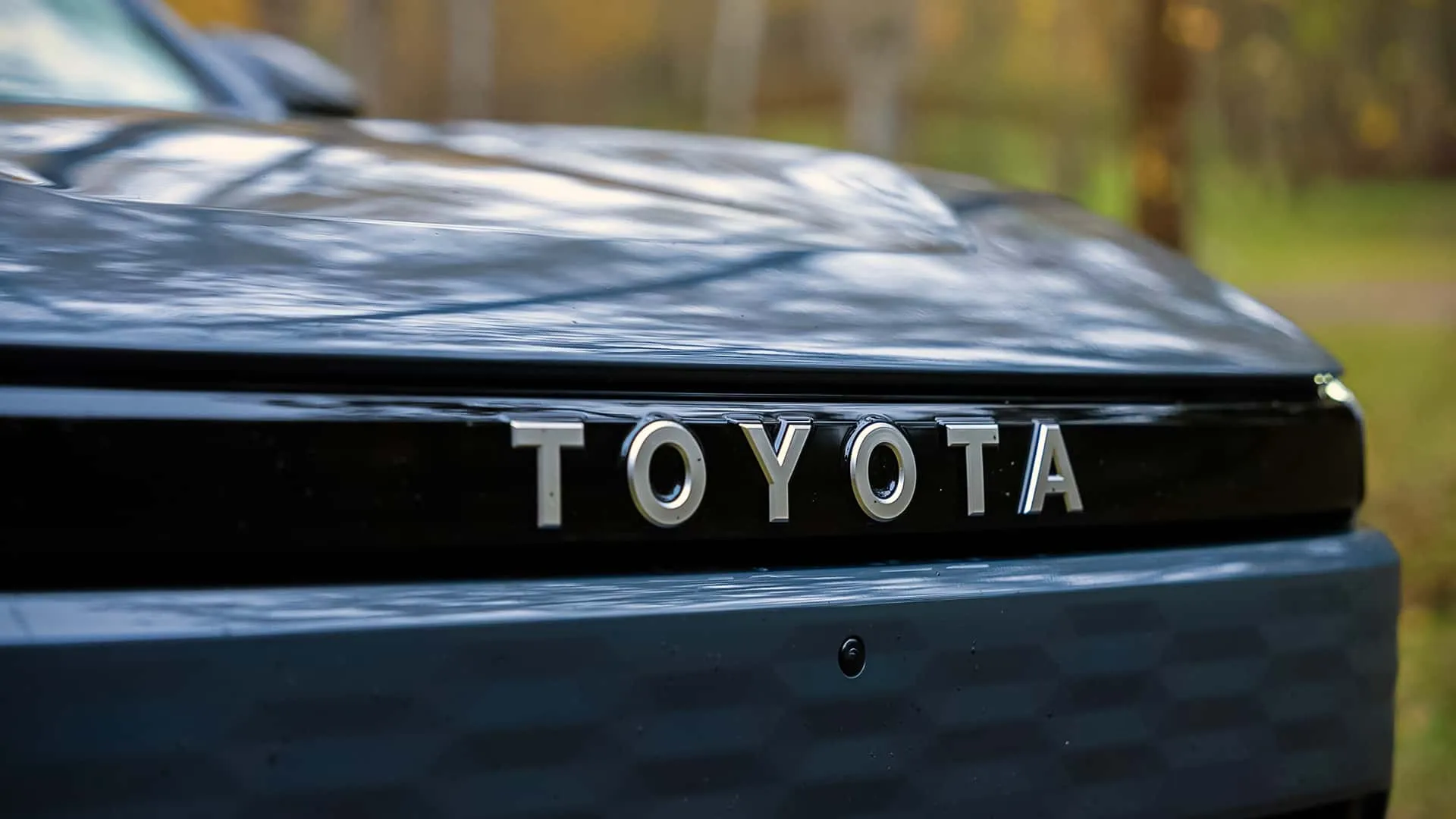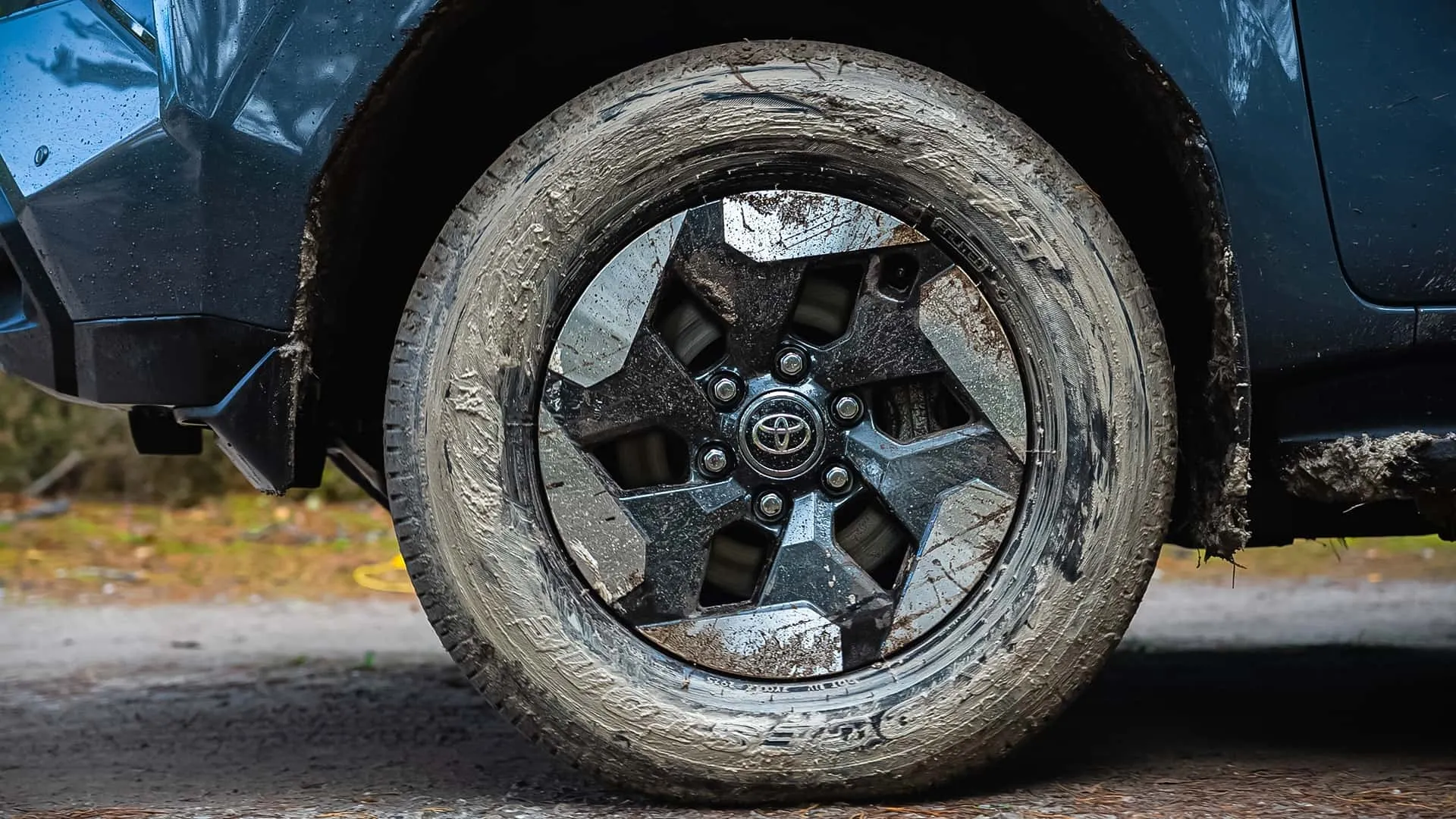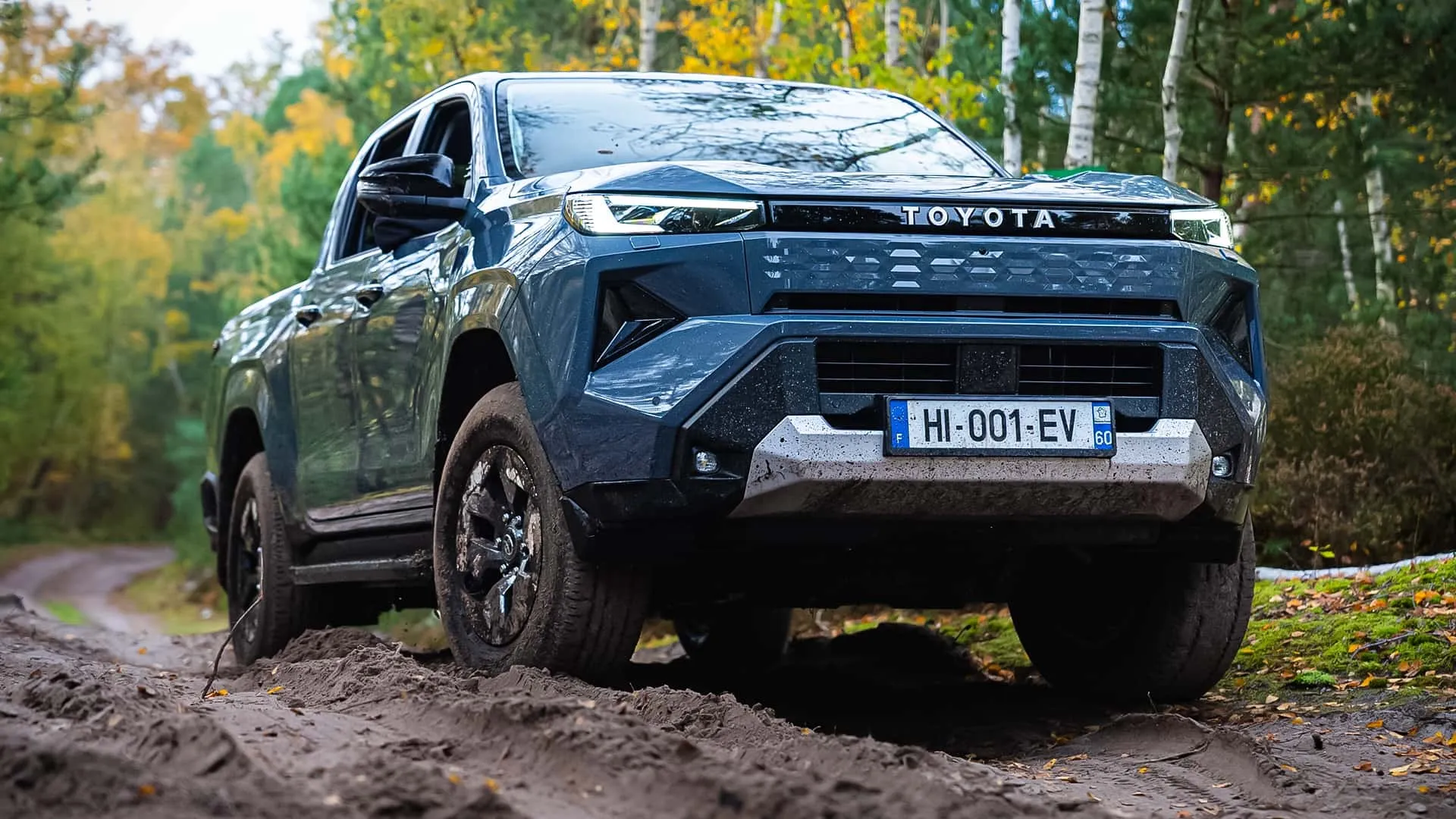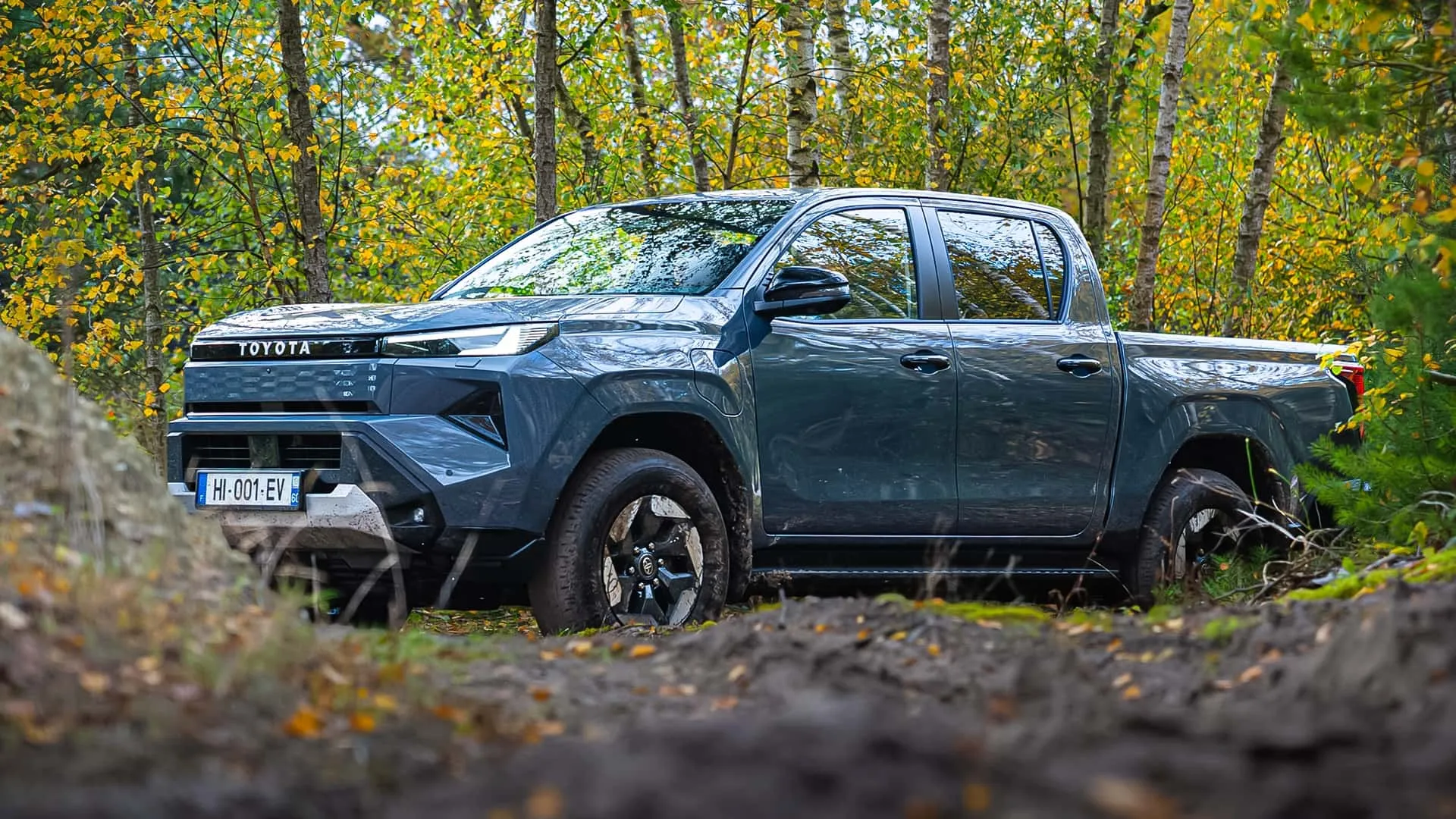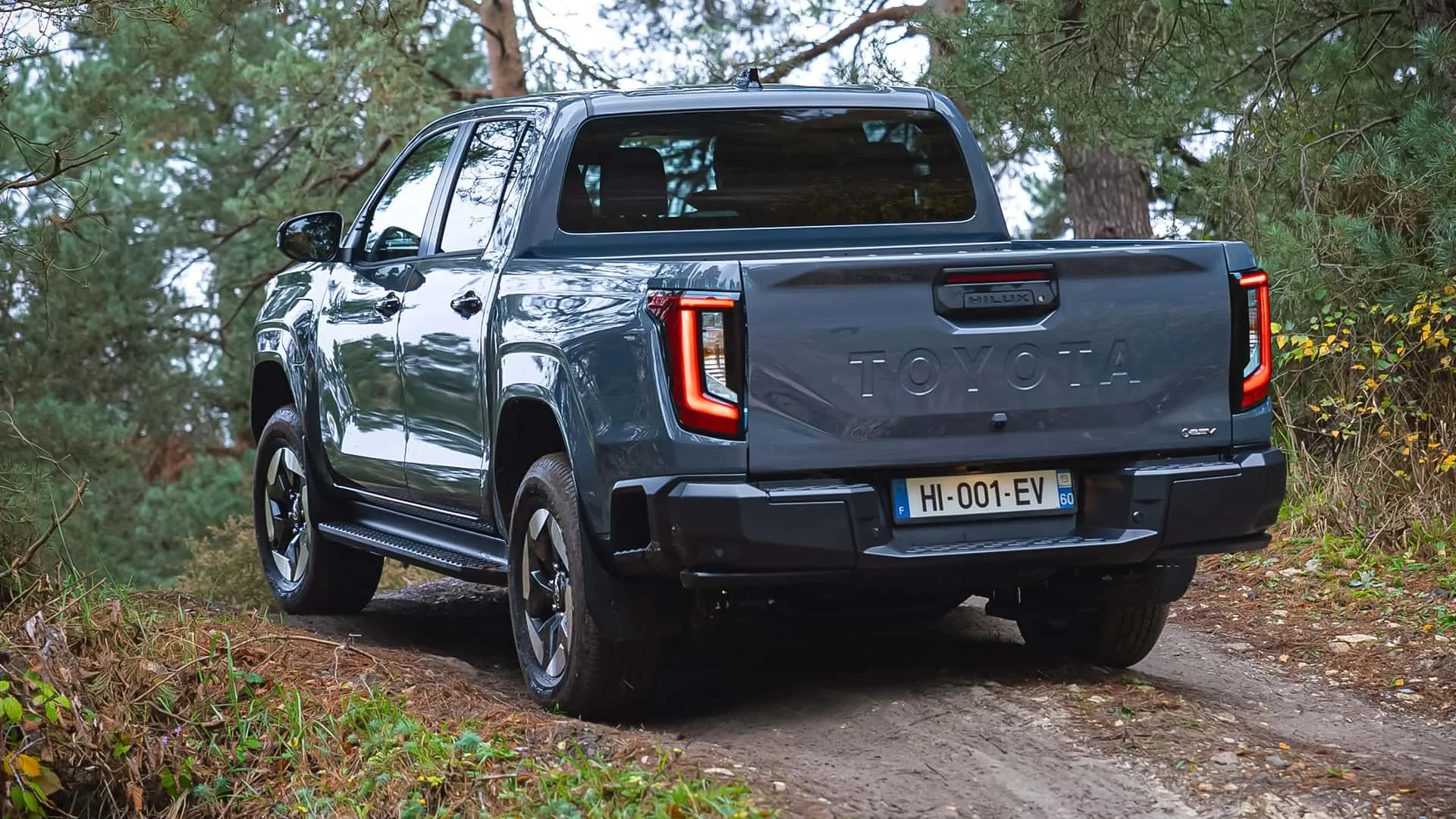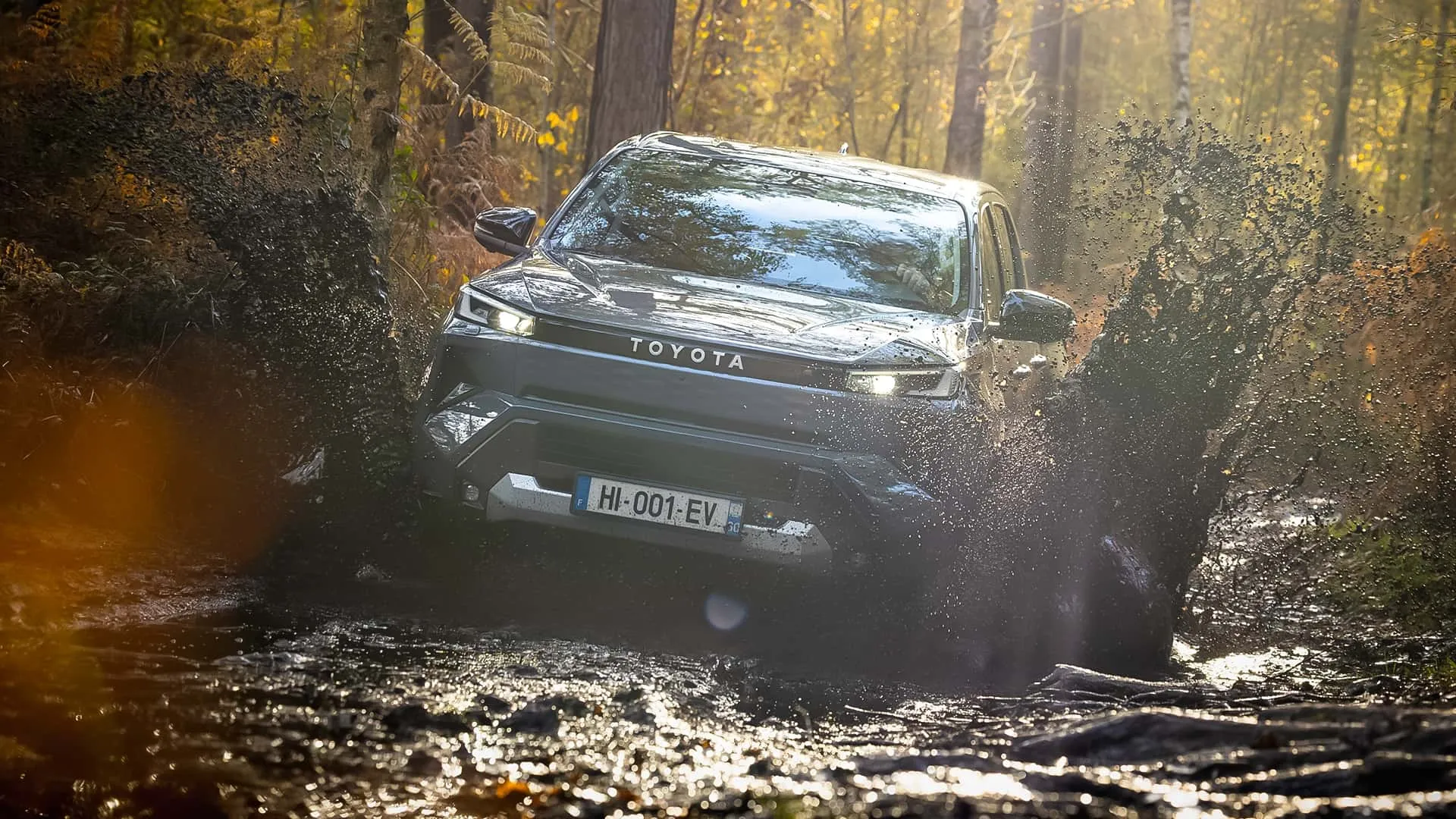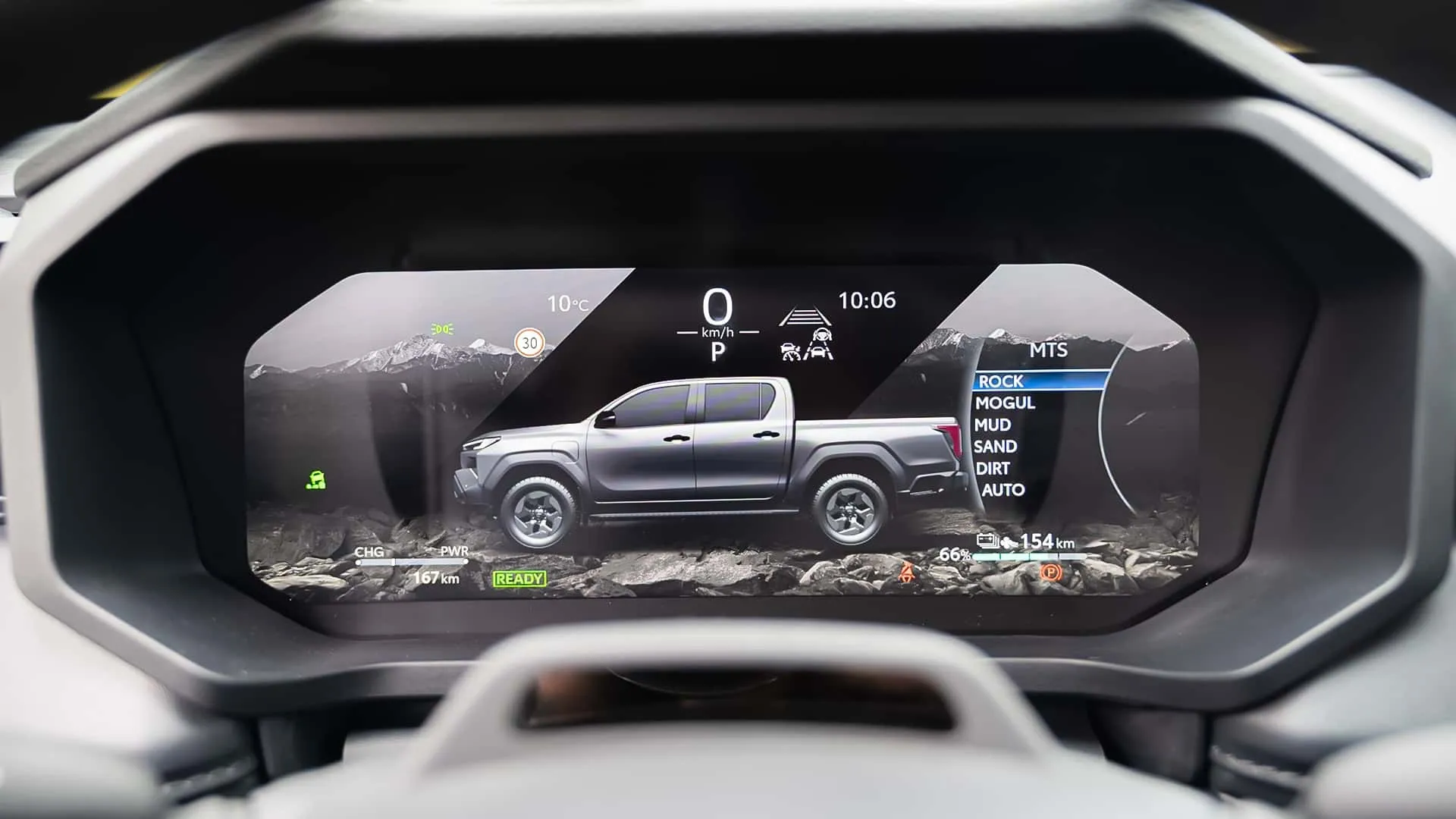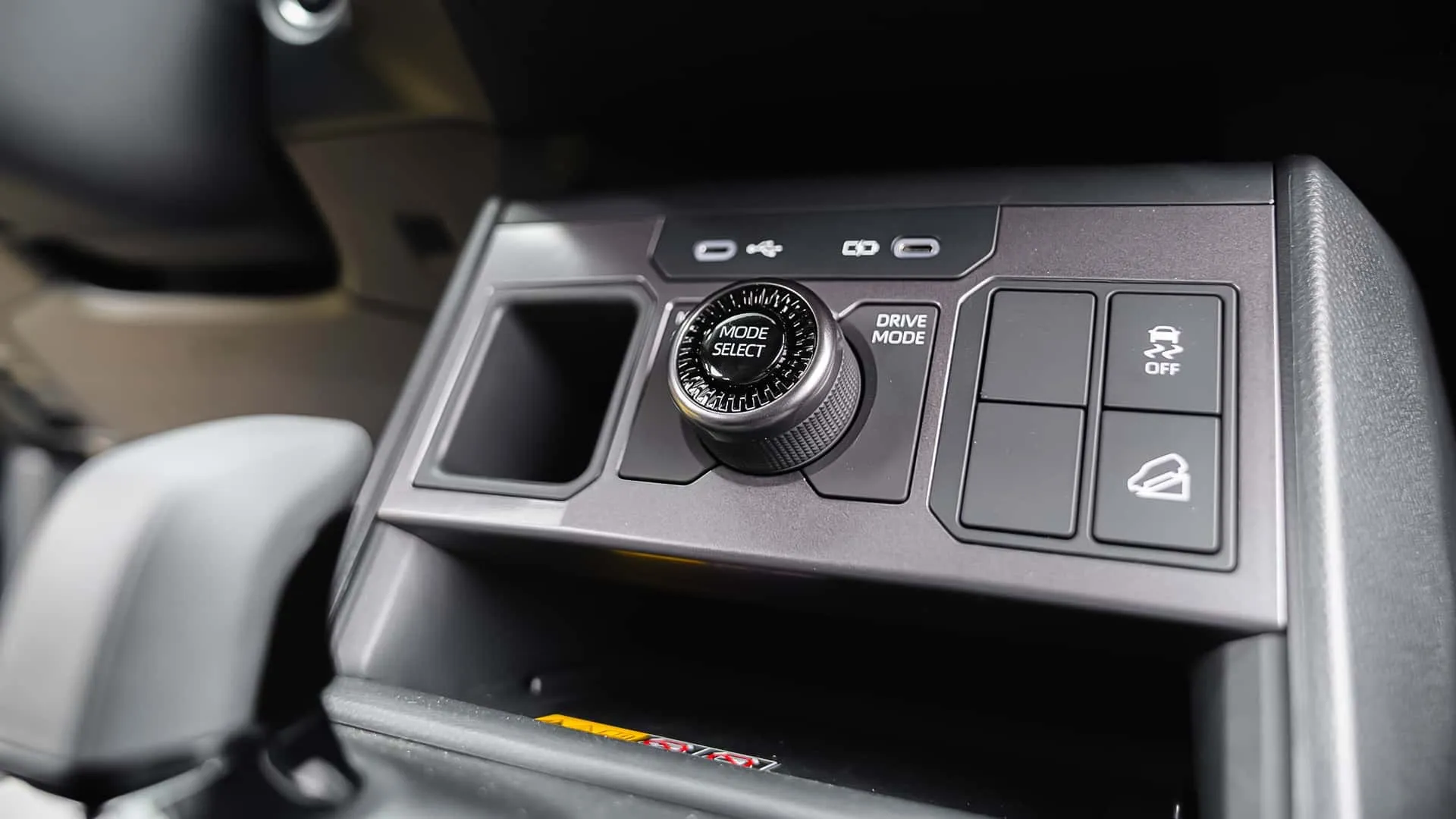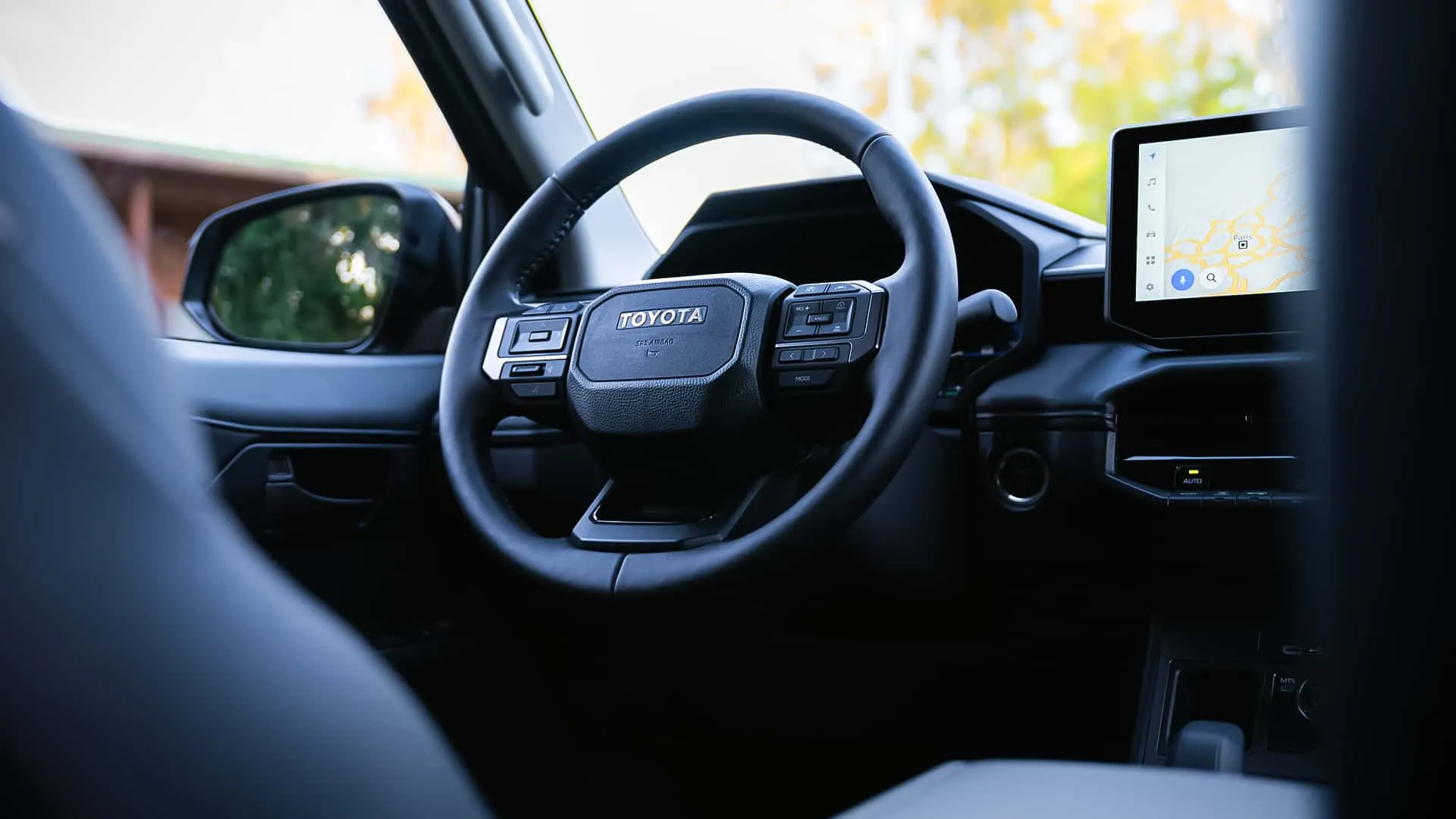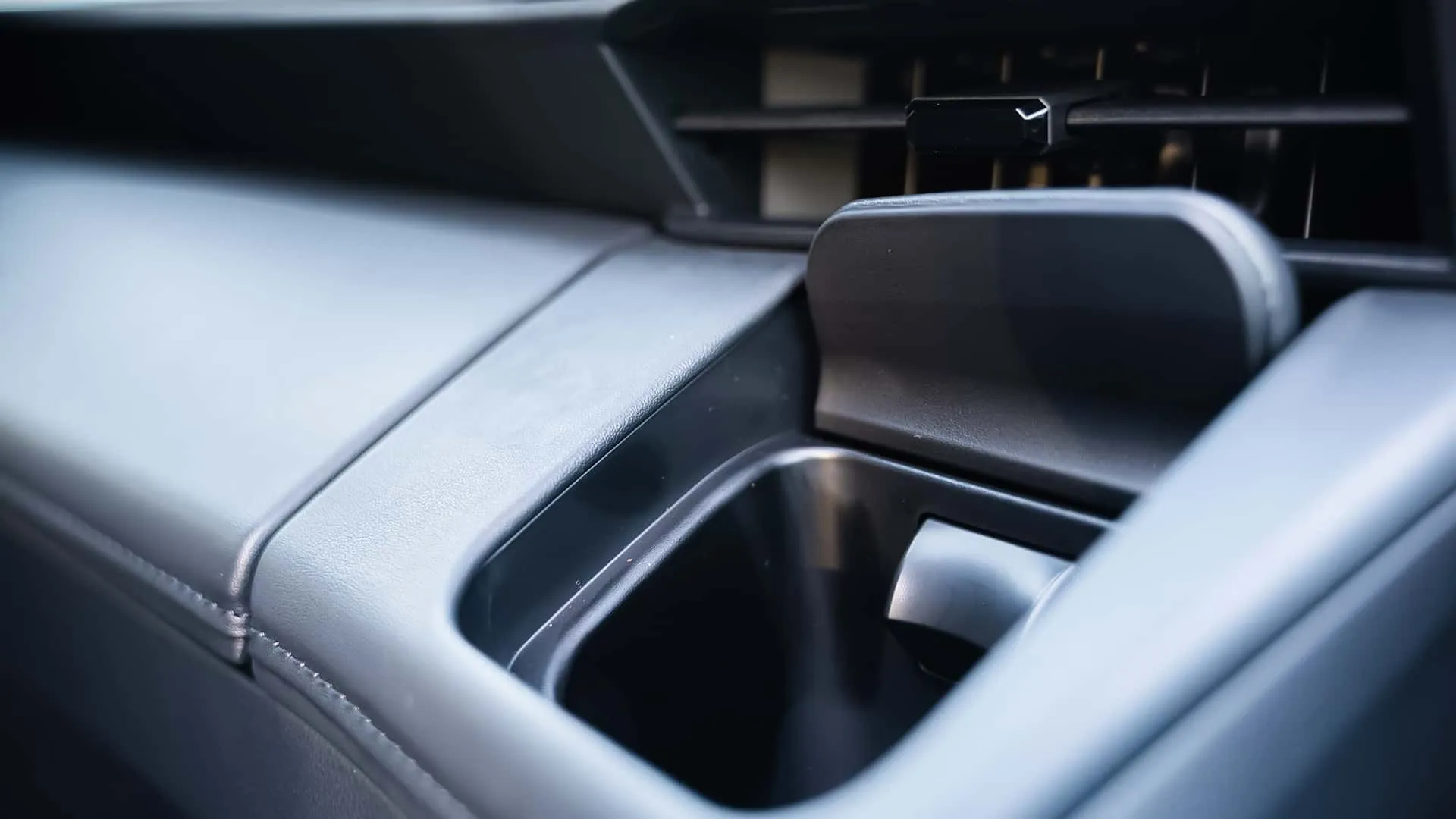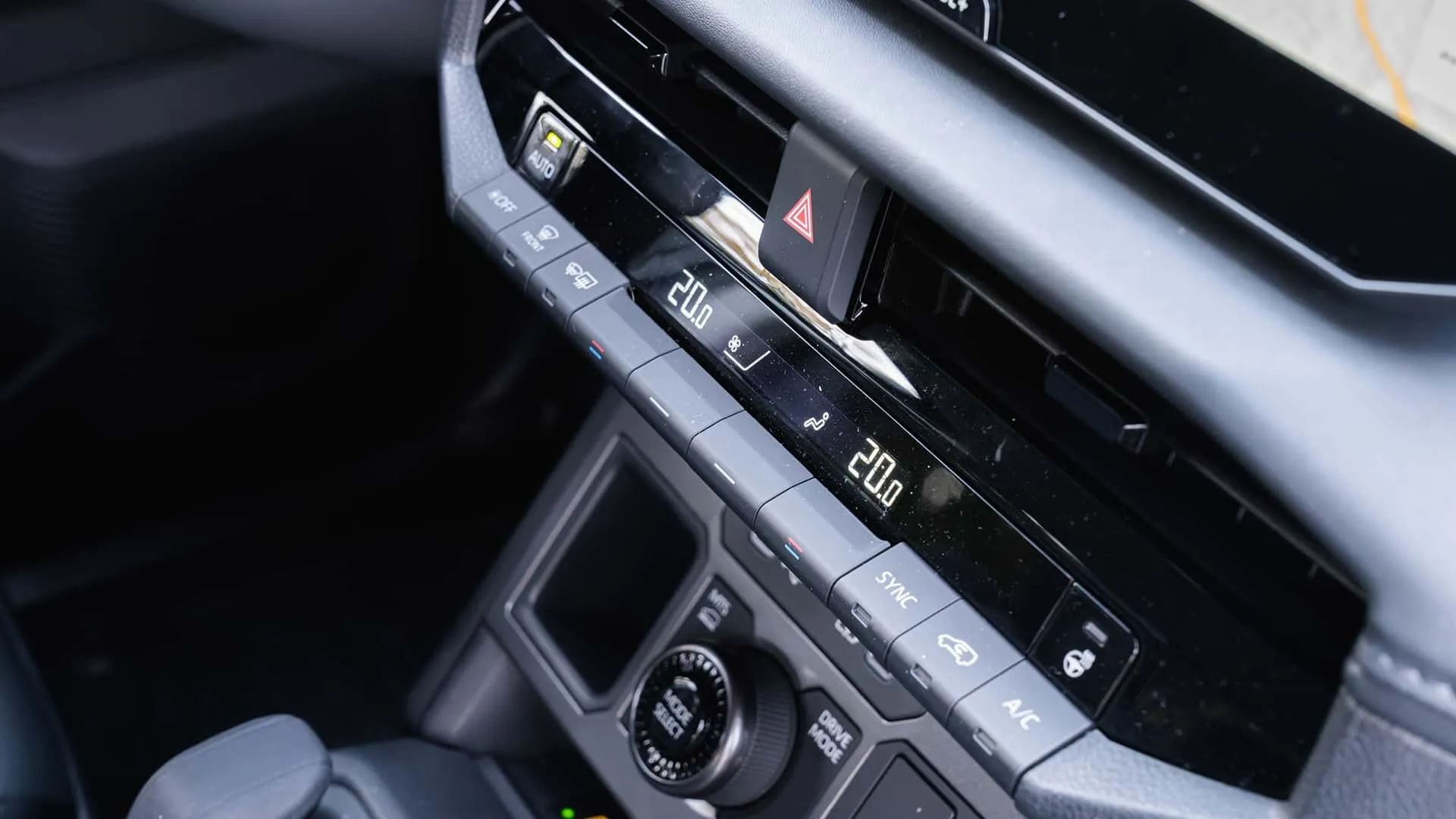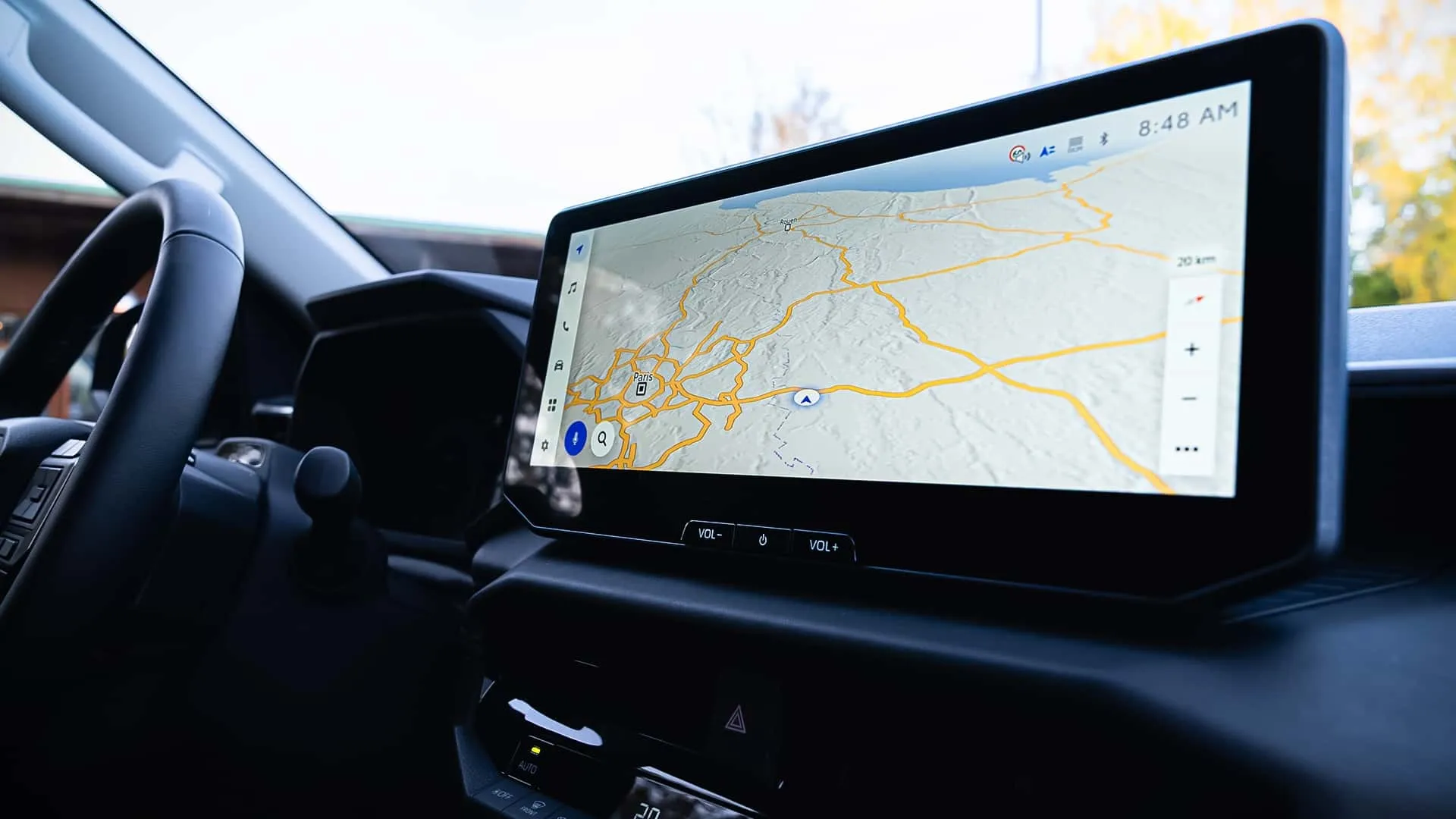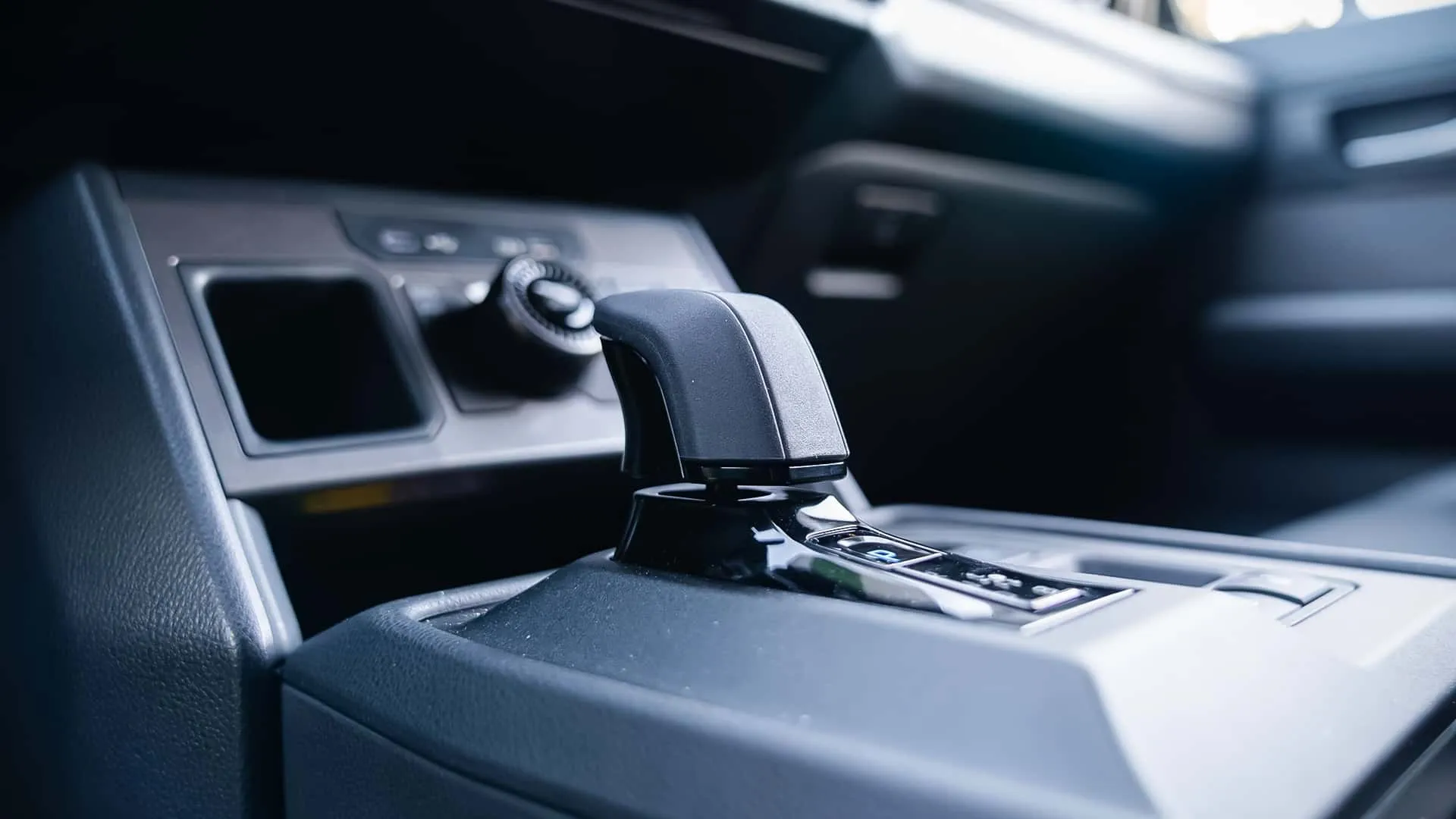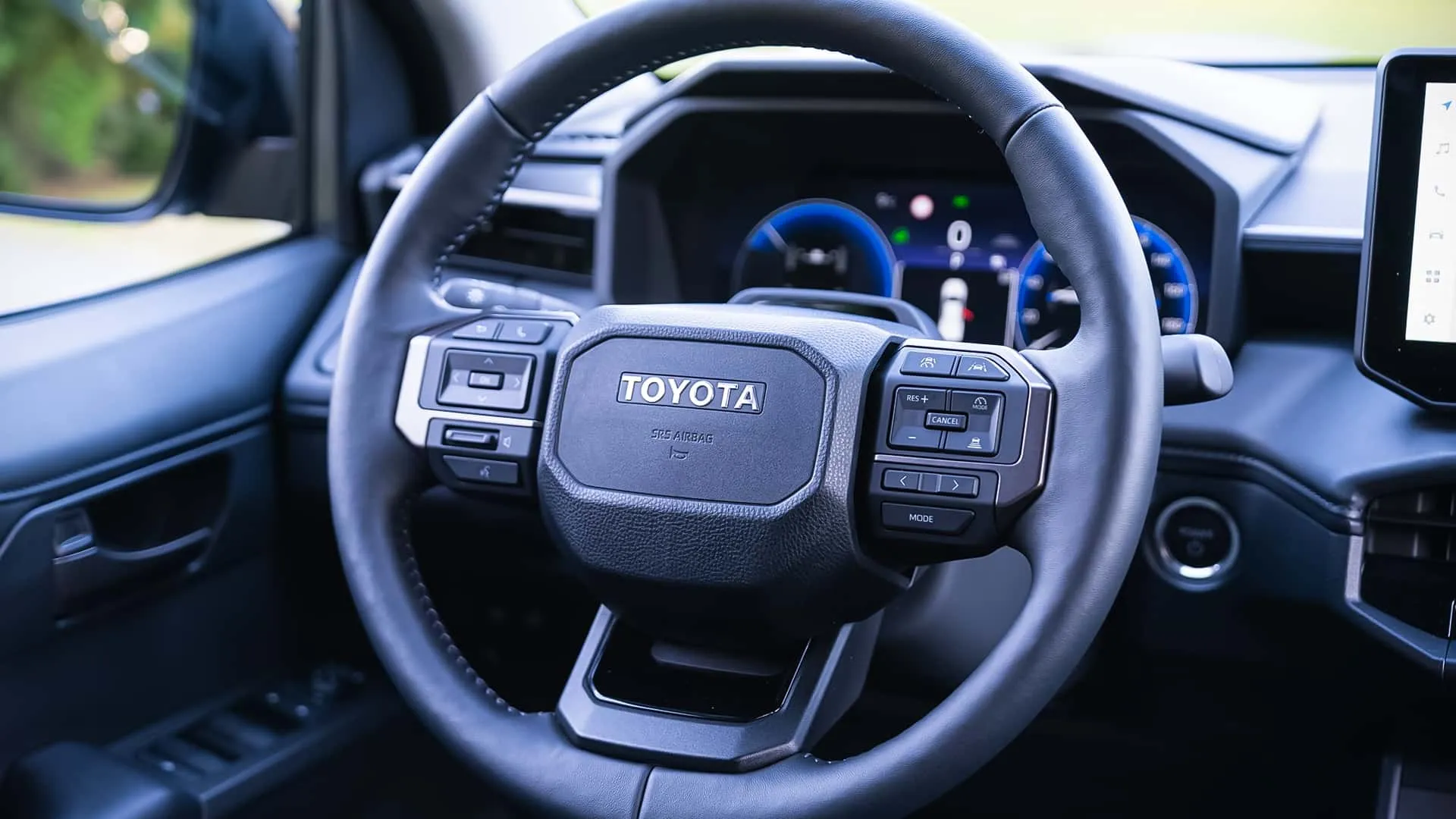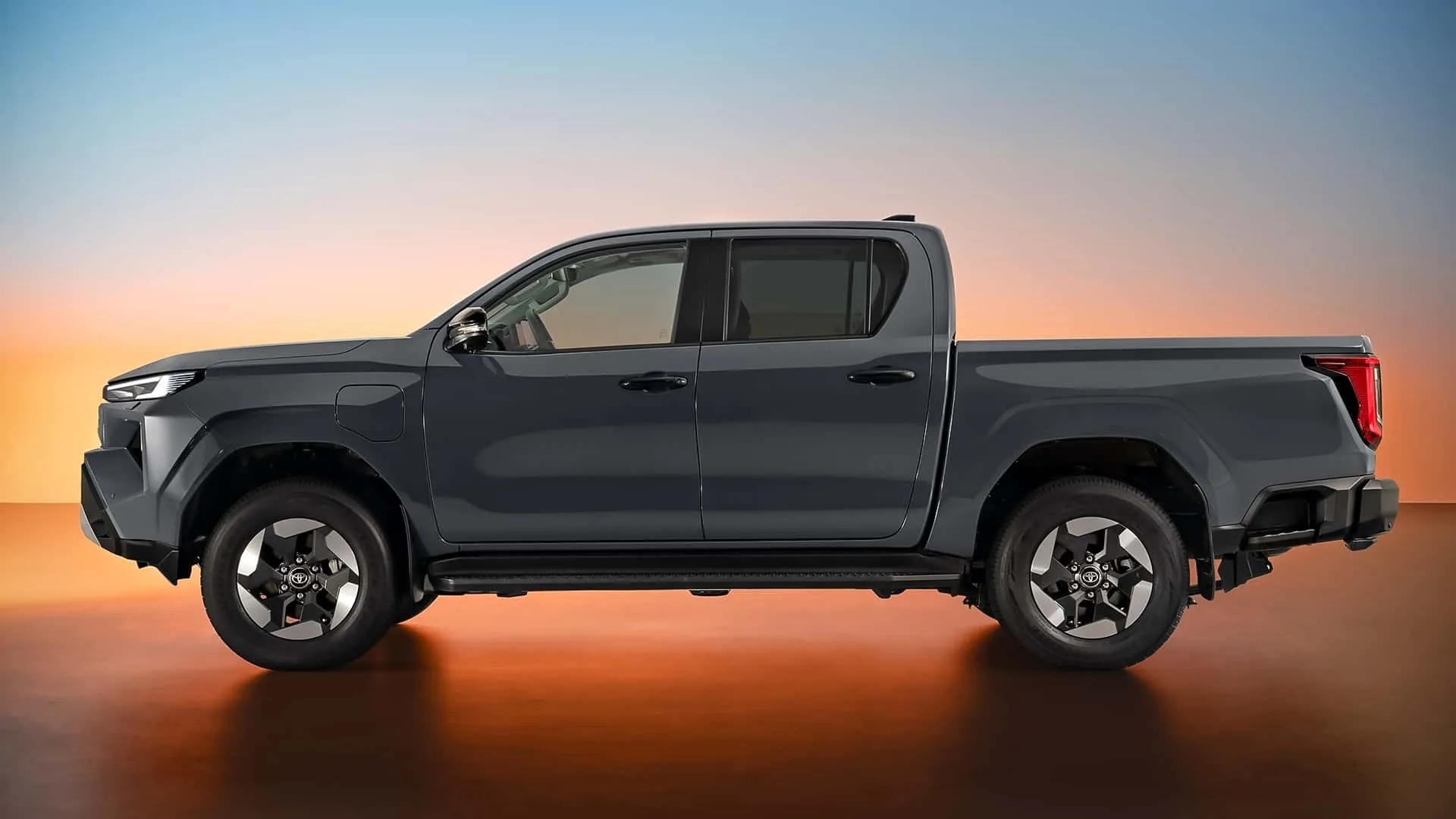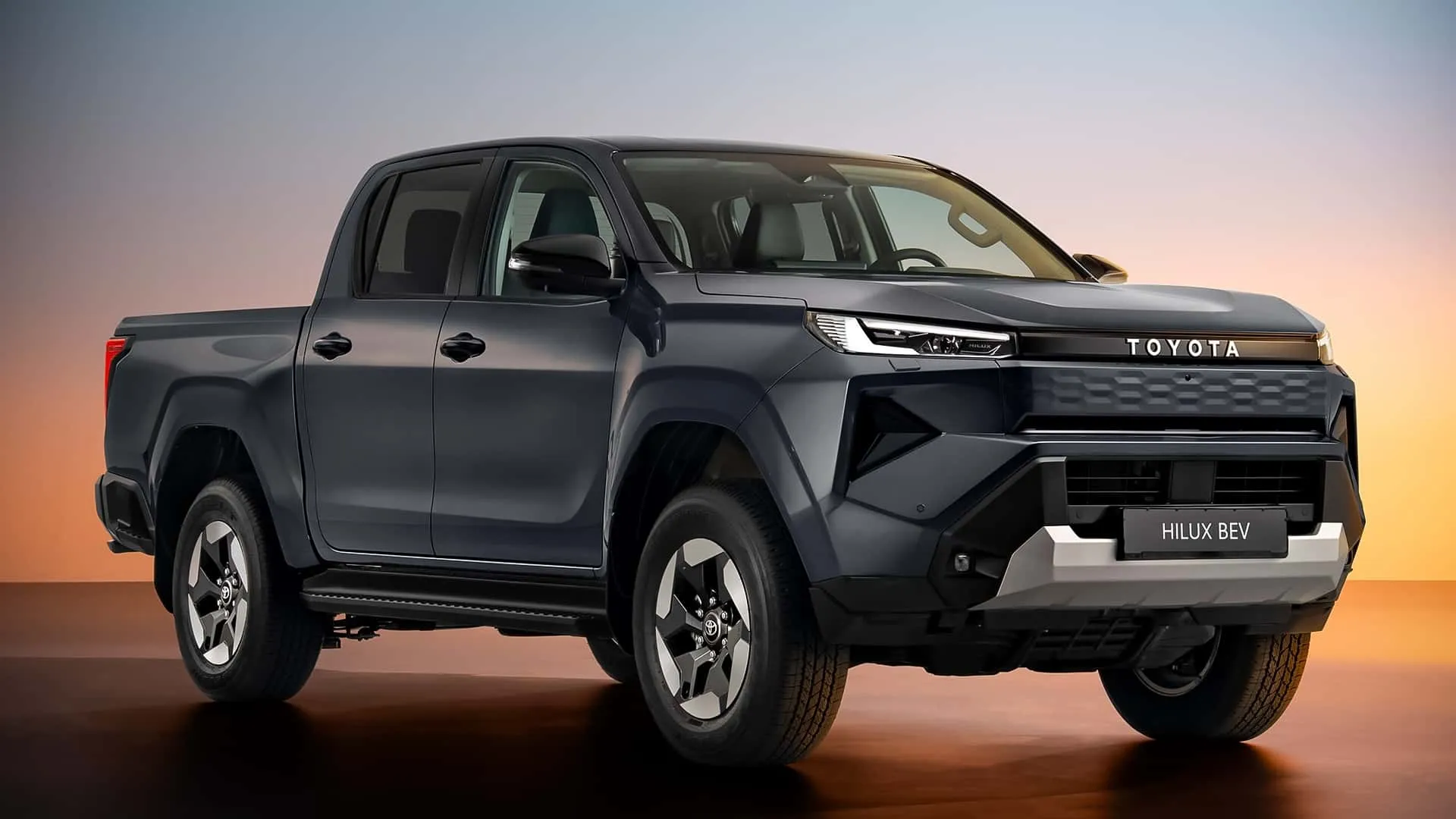Brutal and smarter. The new Hilux 2026 features a “Tough and Agile” design and luxury SUV technology. See what has changed inside.

Get ready: the pickup truck universe will never be the same! The Toyota Hilux 2026 arrives to turn everything upside down — with electric, hybrid, and even hydrogen fuel cell versions, in addition to its undefeated diesel tradition. The secret? The Multipath strategy, which not only challenges competitors but elevates the concept of versatility to another level. Discover what is changing, why this launch is more revolutionary than you imagine, and what surprises could make the Hilux the global leader in the next decade.
The New Generation Hilux: The Pickup of the Future is Here
Toyota has just launched the ninth generation of the Hilux, presenting its bold Multipath strategy to the world, a game-changer in the midsize pickup segment. Market followers know that the Hilux has long been a benchmark for reliability and robustness, but the global scenario now demands unprecedented flexibility, sustainability, and cutting-edge technology.

The Multipath concept, already popular in SUVs and now applied to pickups, makes the Hilux the first in the world to offer a wide variety of drivetrains — including diesel, flex-fuel, 48V hybrid, fully electric (BEV), and, in 2028, the unprecedented hydrogen cell-powered Hilux. This ensures relevance both in regions where electrification is progressing rapidly and where fossil fuels remain dominant.
Did You Know? In many markets, the Hilux was already the favorite pickup among farmers, transporters, companies, and fleet owners, primarily due to its legendary turbo diesel engine — which now receives efficiency improvements and electrification without losing its core identity.
Multipath in Practice: Which 2026 Hilux is Right for You?
Toyota unified the platform and standardized the double cab with four-wheel drive, establishing a clear design ethos of robustness and agility — termed “Tough and Agile.” Check out the main highlights and which version is expected to dominate each scenario:
- Electric Hilux BEV (100% Electric) –
Expected in December 2025, this model features a 59.2 kWh battery, permanent all-wheel drive, instant torque (205 Nm front, 268.6 Nm rear), and an approximate range of 240 km (WLTP standard). Its off-road capabilities, including ground clearance and approach/departure angles, remain strong, ensuring intense competition with diesel options for those who refuse limits. - Hilux Hybrid 48V –
Production begins Spring 2026. The mild-hybrid system uses a 48V battery located under the rear seats, working alongside the 2.8L turbodiesel. It delivers up to 1-ton payload, 3,500 kg towing capacity, and the same 700 mm water wading depth. Ideal for those seeking fuel economy, torque, and low maintenance, without sacrificing the “Hilux spirit.” - Conventional Diesel and Gasoline Versions –
Remain robust, especially in Eastern Europe, parts of Africa, and Latin America, combining tradition, low operational costs, and easy maintenance. - Hilux Fuel Cell (Hydrogen) –
Scheduled for 2028. It utilizes technology similar to the hydrogen BMW X5 due to a strategic partnership, targeting cutting-edge markets and fleet operators who will benefit from zero-emission incentives.
Have you noticed the automotive market increasingly betting on downsizing and hybridization? Understand why turbo 4-cylinder engines are replacing V6s and V8s — and how this impacts SUVs, pickups, and even sports cars.
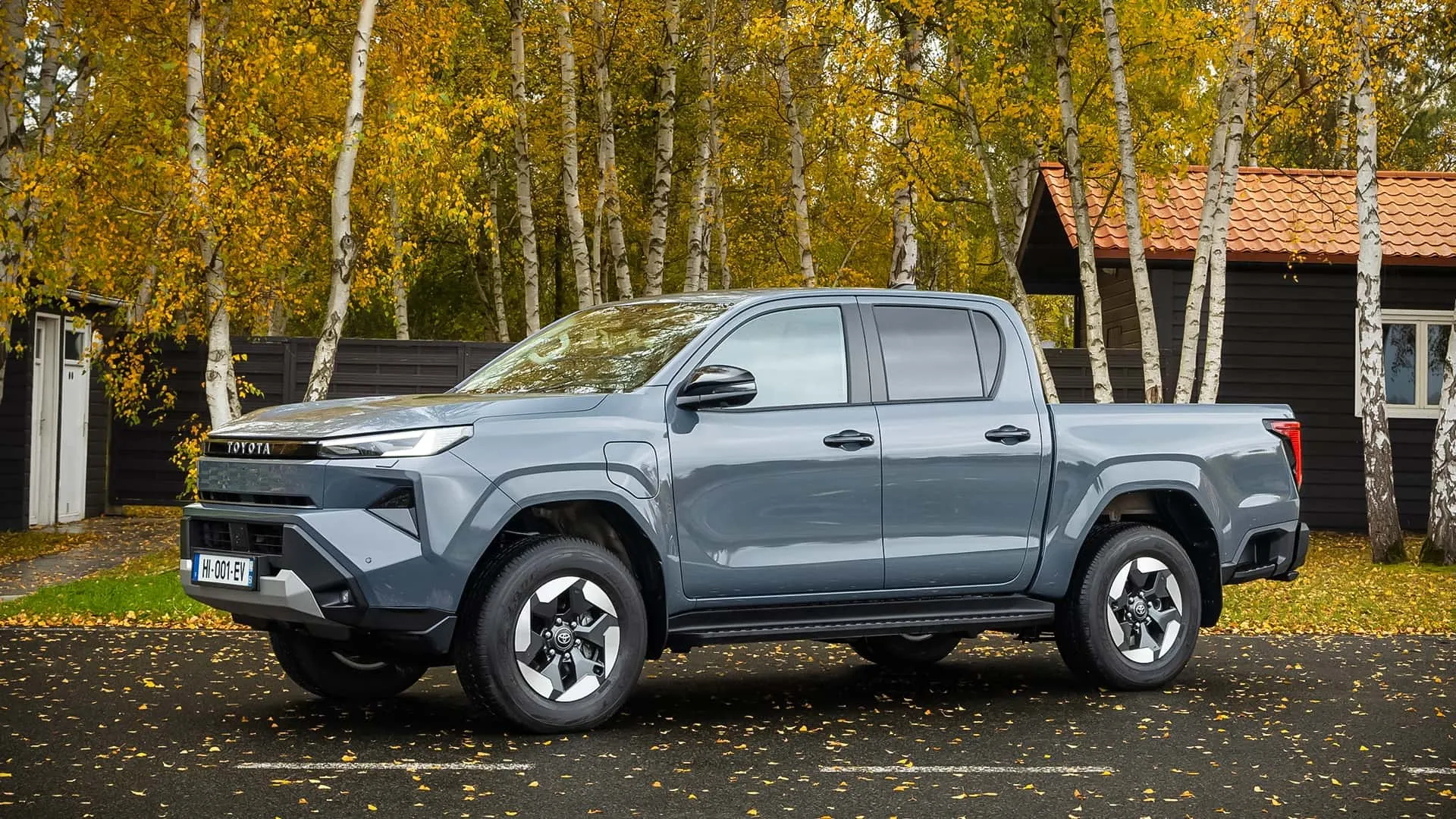
“Tough and Agile” Design: Modernity Without Losing its Rugged Soul
The 2026 Hilux features radical visual changes. The classic front grille with the TOYOTA inscription is now sleeker and more aggressive, featuring narrow all-LED headlights. The raised bumper aligns the aesthetics with its adventurous and bold DNA, while the side profile emphasizes strength (yet maintains lightness), essential for tackling both urban environments and extreme off-road missions.
Inside, the central dashboard is dominated by a touchscreen up to 12.3 inches, focused on total connectivity, modern graphics, and support for Over-The-Air (OTA) updates — meaning your system is always current without dealership visits. The interior draws inspiration from the new Land Cruiser, featuring horizontal lines and soft-touch materials that enhance comfort even on long journeys.

“Anyone who has driven a Hilux off-road knows that it’s not just brute force, but precision and technology. The new Multi-Terrain Select allows configuring the vehicle’s response to conquer mud, sand, rocks, and trails — now featuring a 360-degree monitor, cameras, and assistance features previously only seen in luxury SUVs.”
Onboard Technology: Top-Level Safety and Connectivity
The new Toyota Hilux offers a list of technologies worthy of premium segments:
- Toyota T-Mate: Expanded assistance package, now supporting OTA updates.
- Low-Speed Acceleration Suppression: Prevents collisions from accidental pedal presses in traffic.
- Proactive Driving Assist System: Operates braking and minor steering corrections whenever necessary.
- Emergency Driving Stop System: Capable of automatically stopping the pickup if the driver becomes ill or distracted.
- Traction controls, off-road modes, and shift-by-wire (in hybrid models): Modern, centralized controls for easy operation on any terrain.

It is no exaggeration to say that in terms of technology and safety, the 2026 Hilux approaches top-line SUVs like the new Land Cruiser FJ 2026, but without sacrificing practicality — and at a (still unrevealed) certainly more competitive price point.
Electric Hilux: What to Expect from Toyota’s First Zero-Emission Pickup?
The launch of the electric Hilux has been awaited for years, especially as a response to the rise of Chinese rivals and the American Ford F-150 Lightning. However, what truly sets the new Hilux BEV apart are not just its specifications, but its ability to overcome real-world challenges: it maintains a robust structure, reinforced bed (715 kg payload), 1,600 kg towing capacity, and high water resistance — promising performance identical to the diesel model in trails and rural areas.
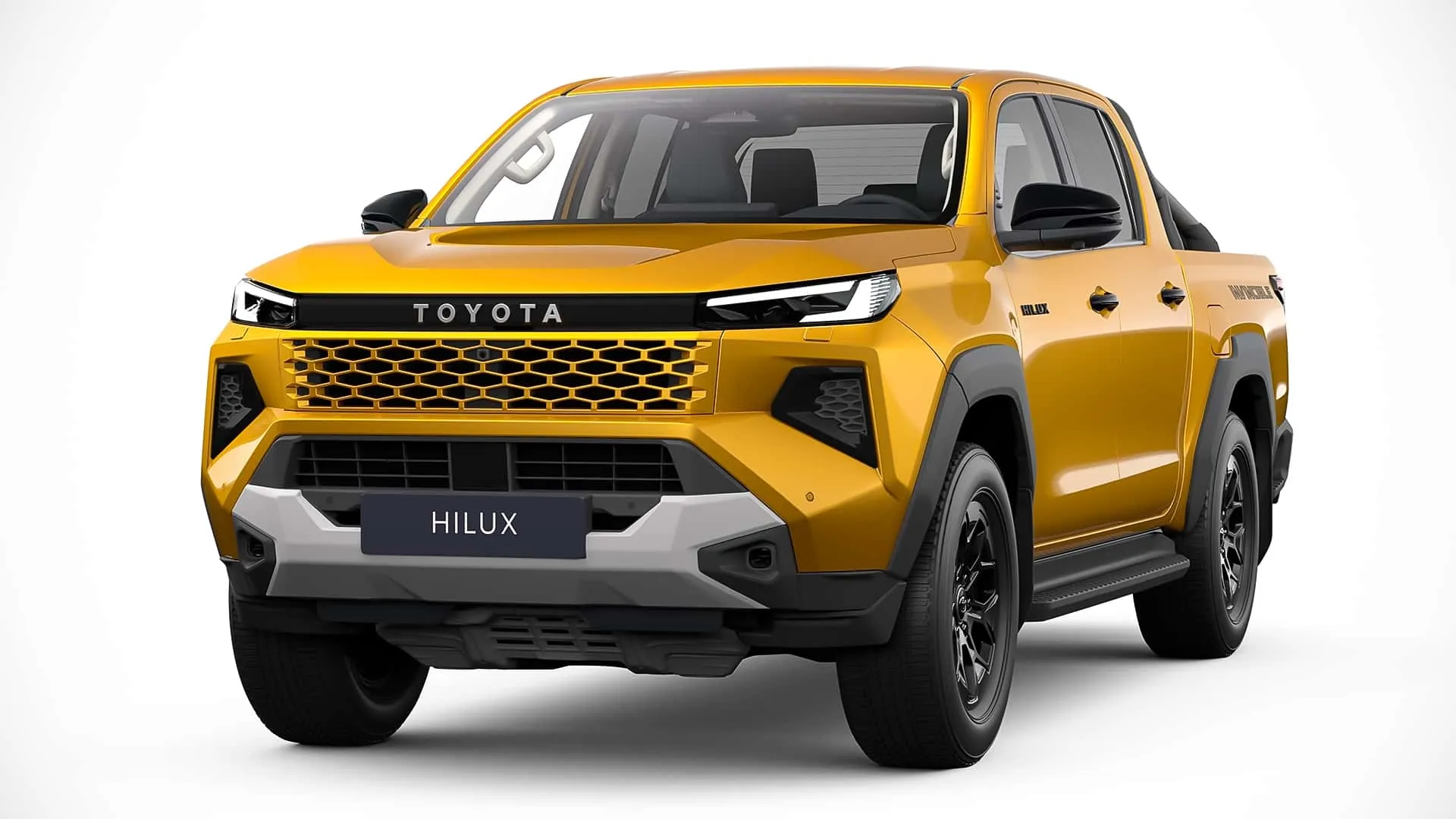
The 240 km range may seem modest compared to newer Chinese electric models, but it is designed for mixed-use cycles, work, and regional trips. The electric all-wheel-drive system prioritizes instant response to the correct wheels, crucial for handling mud and uneven terrains. Furthermore, Toyota plans to upgrade the model to solid-state batteries by 2027, expanding not only range but also overall durability.
If you are considering switching to electric, also understand why 320 km of range already meets 99% of real-world needs — and get tips to maximize your EV’s potential.
Off-Road and Utility Capabilities Elevated to Another Level
Even with all this electrification, Toyota has not forgotten the fundamental “B” (Brute force/Boldness) of the Hilux spirit. The suspension and geometry remain high, featuring generous ground clearance and reinforced components. The Multi-Terrain Monitor offers cameras to facilitate trails and maneuvers on rough terrains, effectively turning any driver into an off-road expert.
The standard double cab, all-wheel drive, and power steering make the driving experience more predictable and comfortable — a generational leap for those upgrading from previous models or entry-level competitors.

Have you seen an electric pickup tackle dirt roads with mud, rocks, and water without losing efficiency? Compare its capabilities to rivals like the Chevrolet Silverado EV Trail Boss and see where Toyota aims to lead!
Don’t Miss: Toyota is also developing a hydrogen fuel cell option for those seeking total sustainability and over 600 km of range, targeting fleet operators, mining companies, and heavy-duty users who require rapid refueling.
Hilux 2026 and the Future of Pickups: Are You Ready?
We know that the Hilux 2026 is not just a new model, but a manifesto. By combining traditional fuels, electrification, and even hydrogen, it sets a new standard for the industry — especially where charging infrastructure is still developing, but the demand for modernity, low cost, and performance continues to grow.
The Multipath strategy positions the Toyota Hilux as the global benchmark for adaptation, anticipating environmental regulations and providing genuine choice for professional or enthusiast consumers. And it’s no coincidence that rumors and studies about the impact of this concept on the development of future SUVs, vans, and even compact urban hybrids are already emerging.
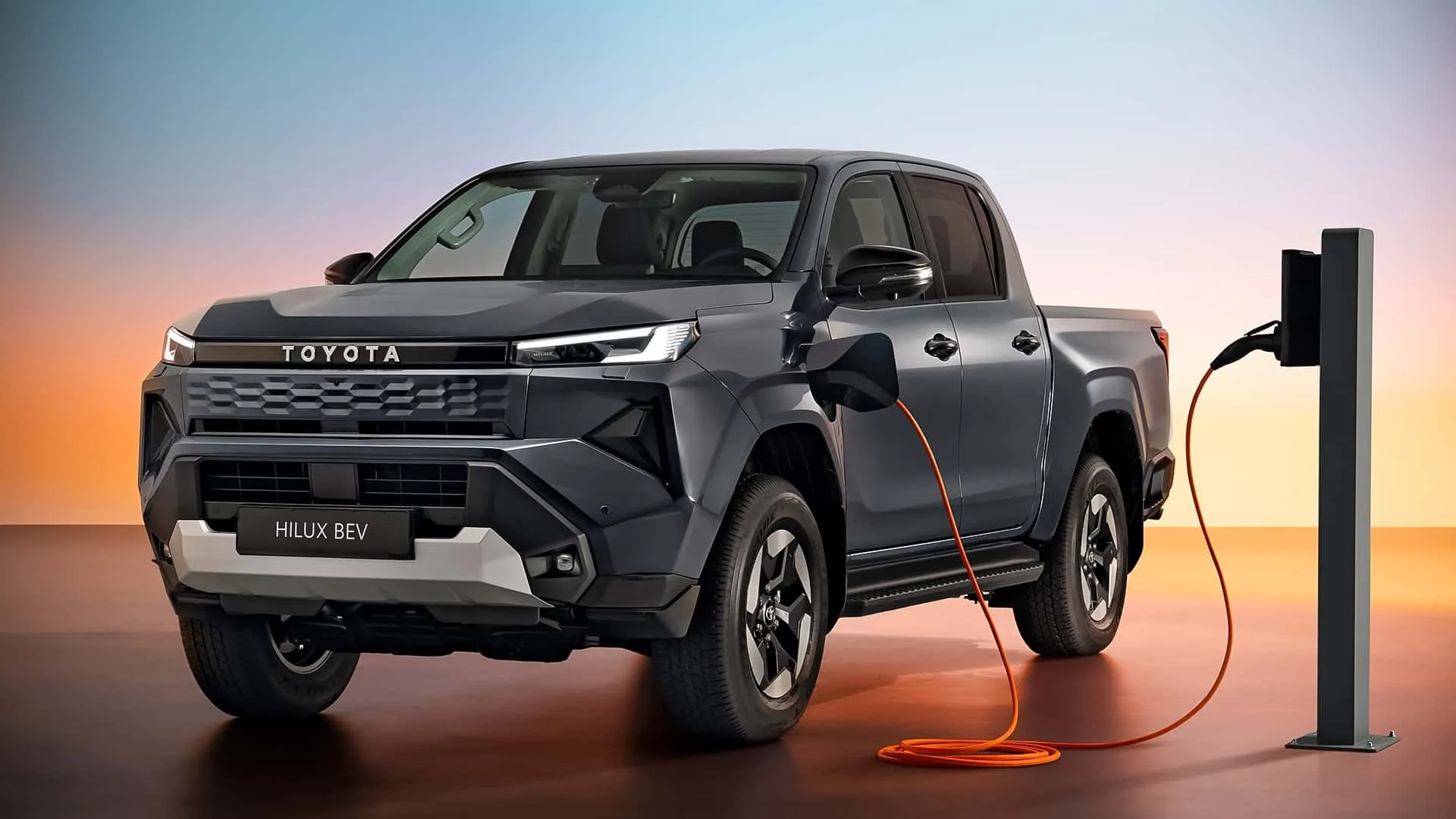
Stay tuned: details about pricing, exact versions for each market, and early driving impressions are expected to emerge in the coming months. But one thing is certain — no other pickup will combine so much technology, durability, and tailor-made options like the Hilux 2026.
For those passionate about automotive innovations, don’t miss checking out how Ford surprised the world with its unique electric pickup or understanding Toyota’s plan for solid-state batteries — promises that could influence the entire industry. Now, it’s just a matter of waiting, as the pickup war is only beginning.
